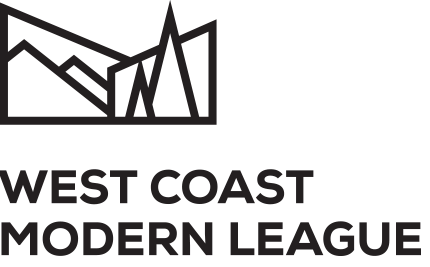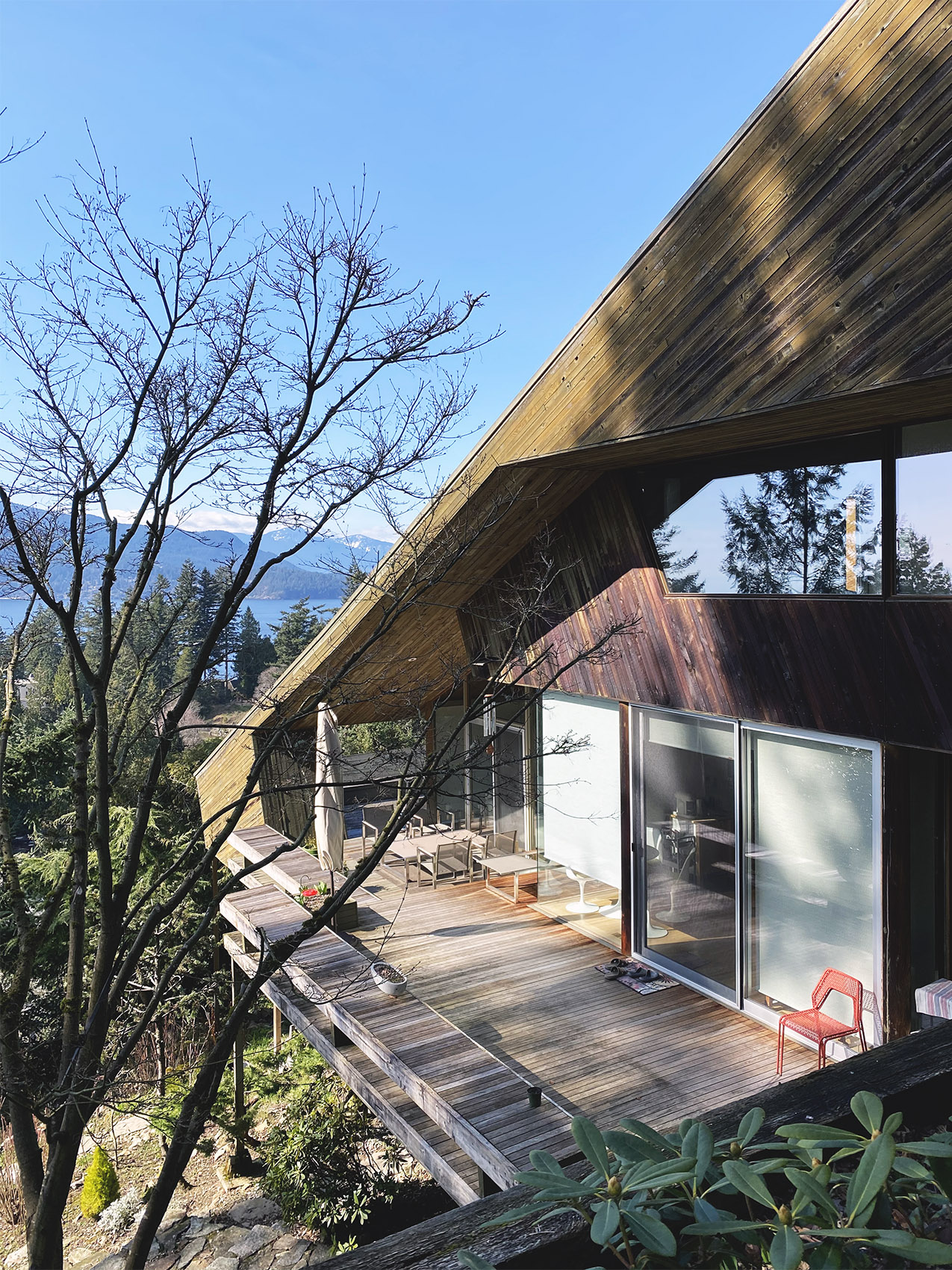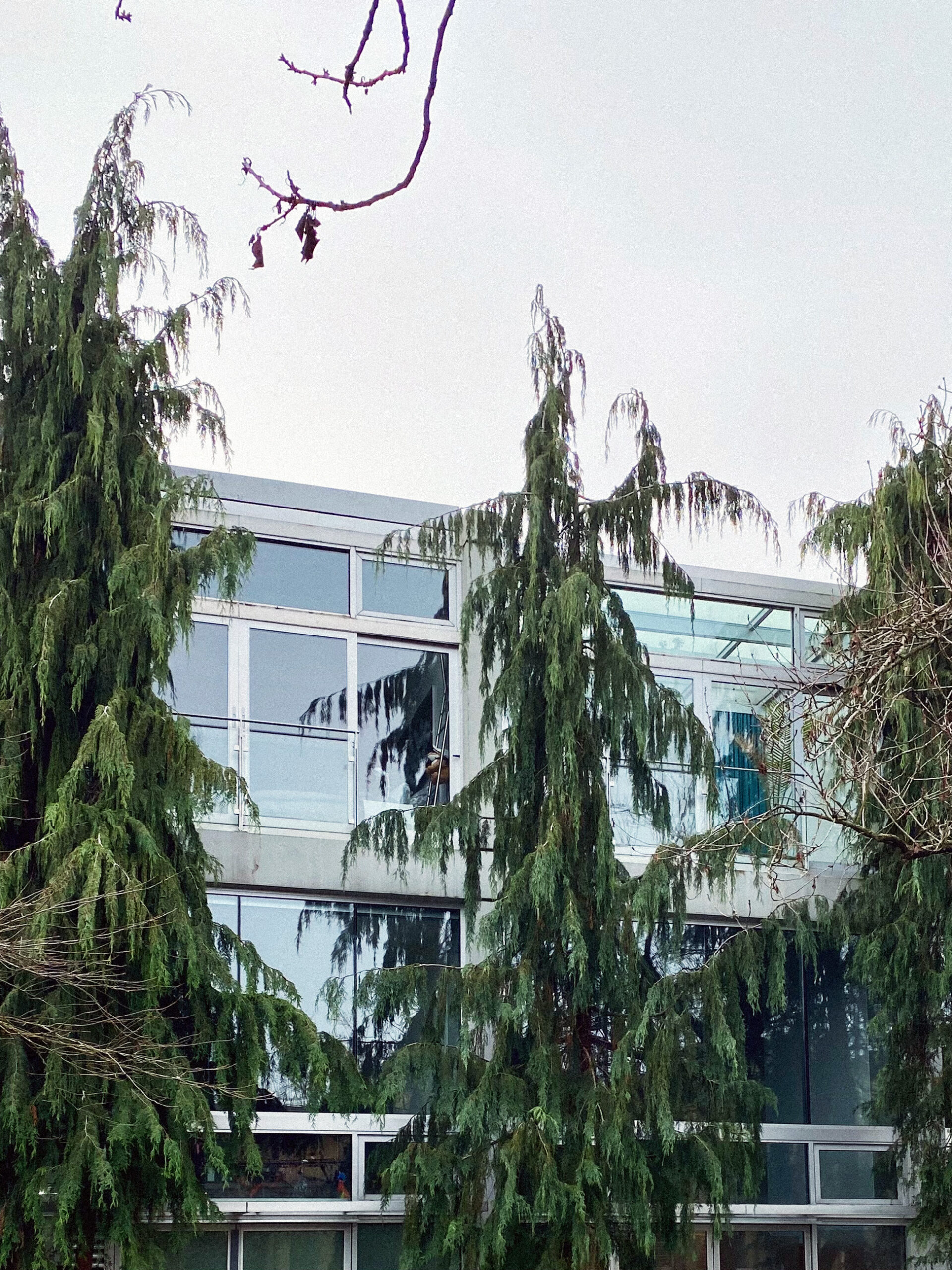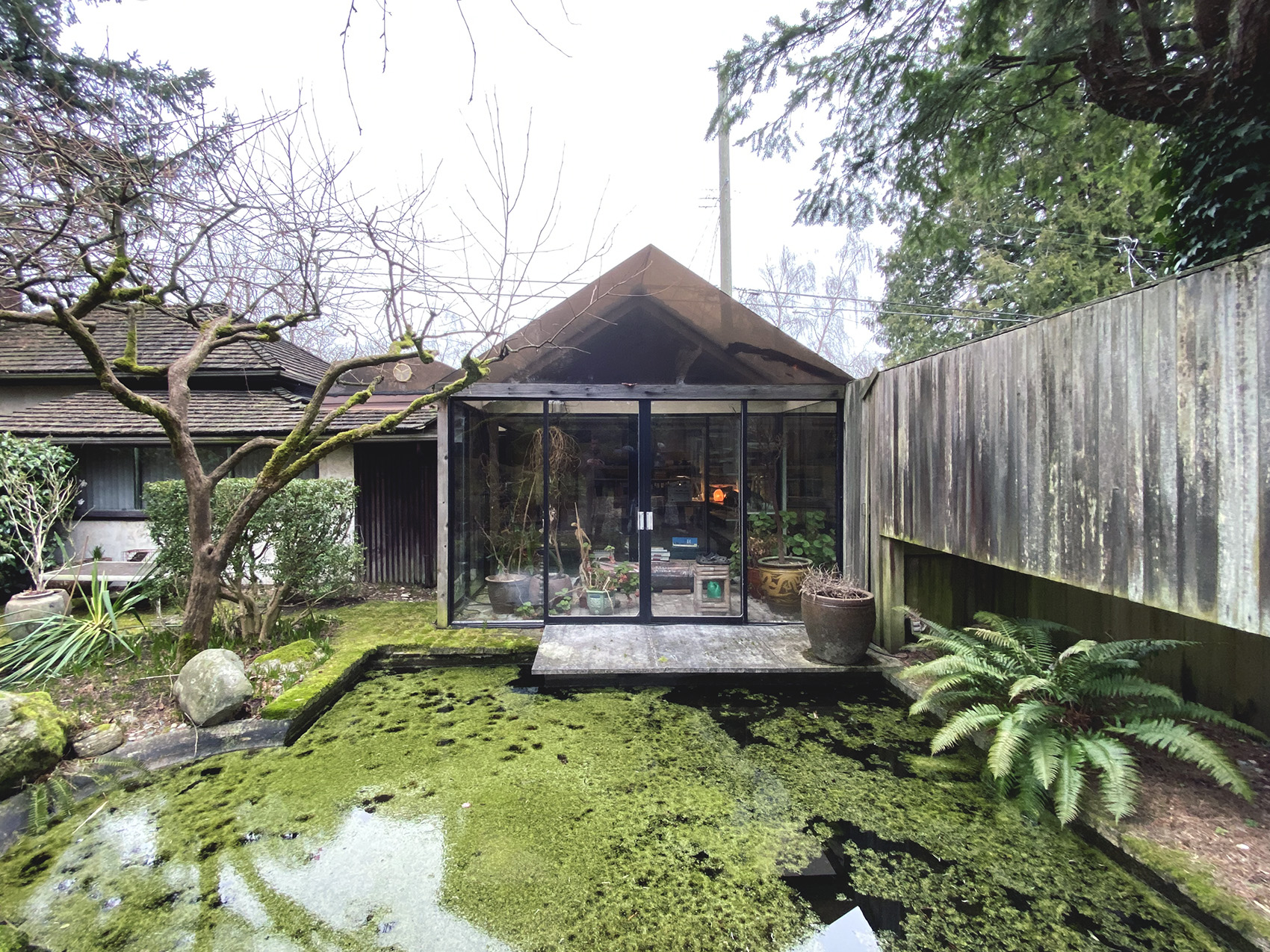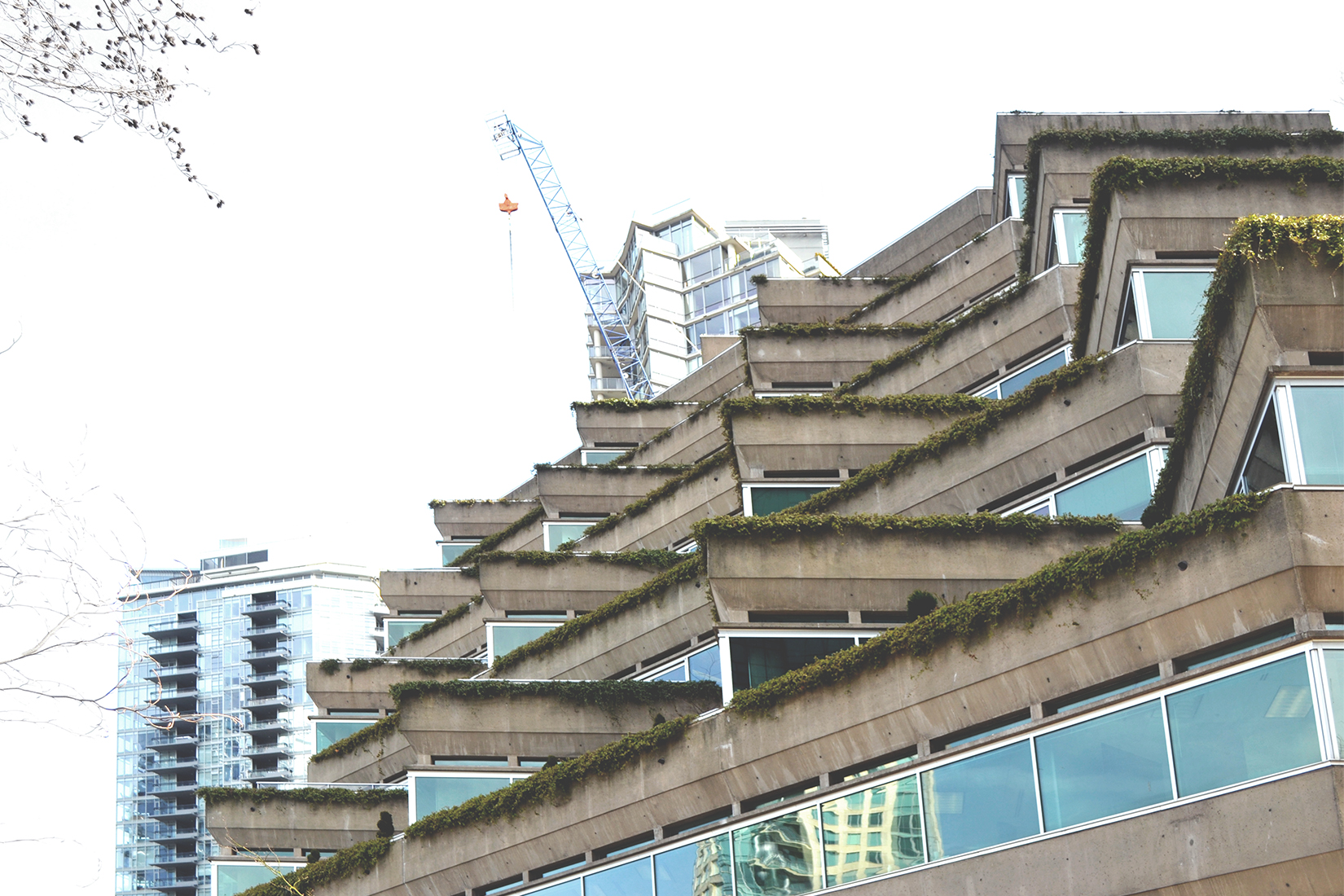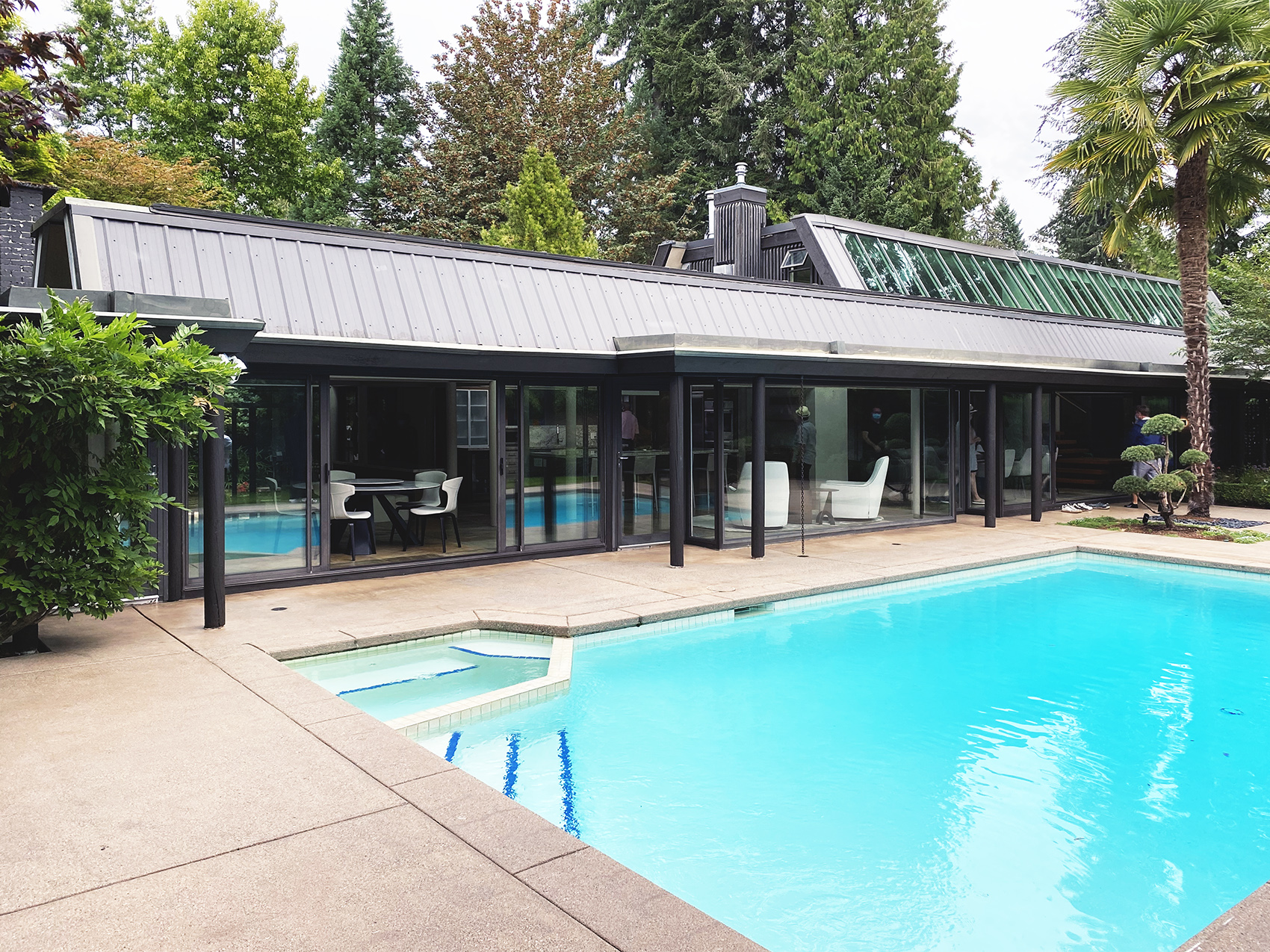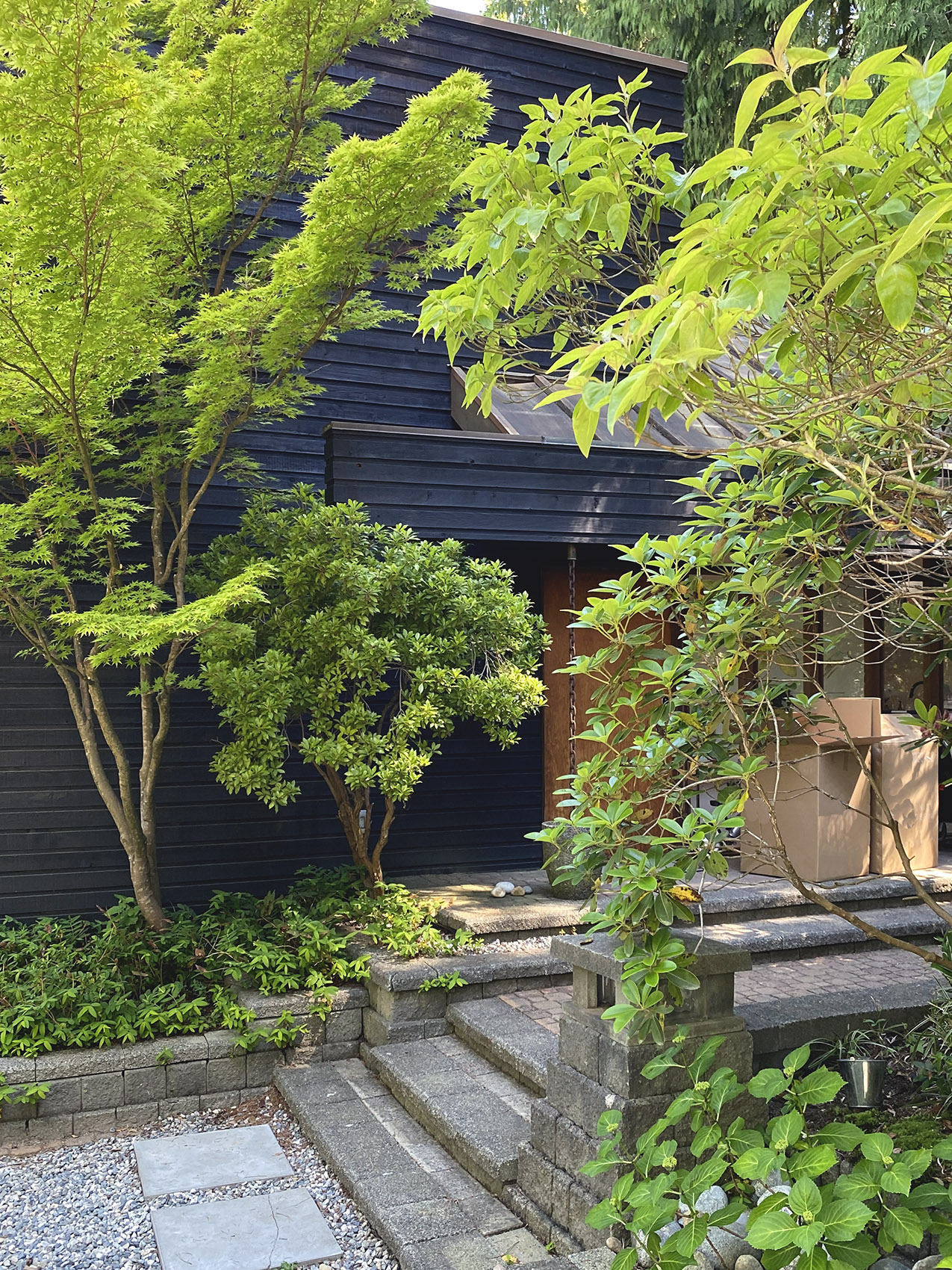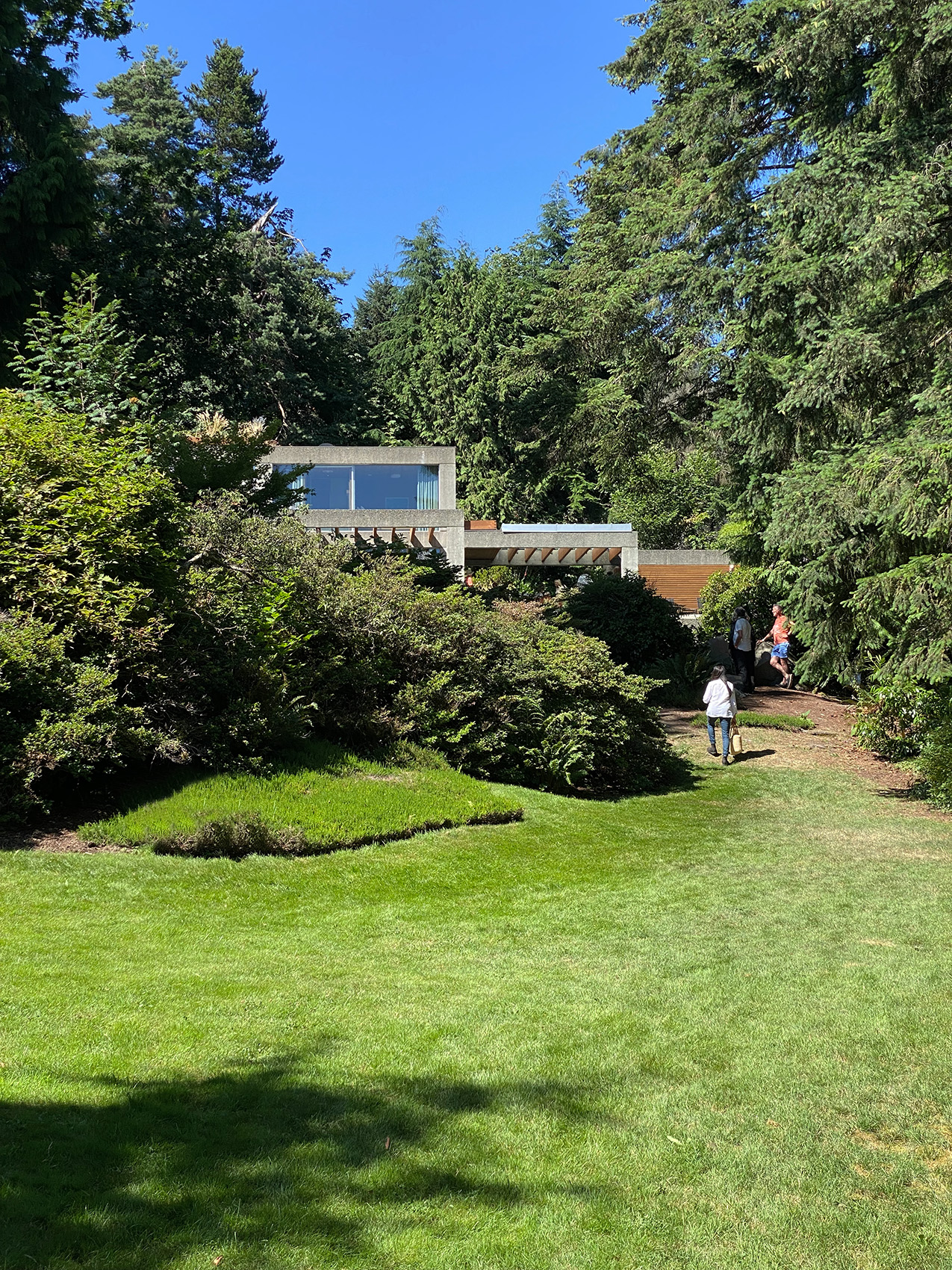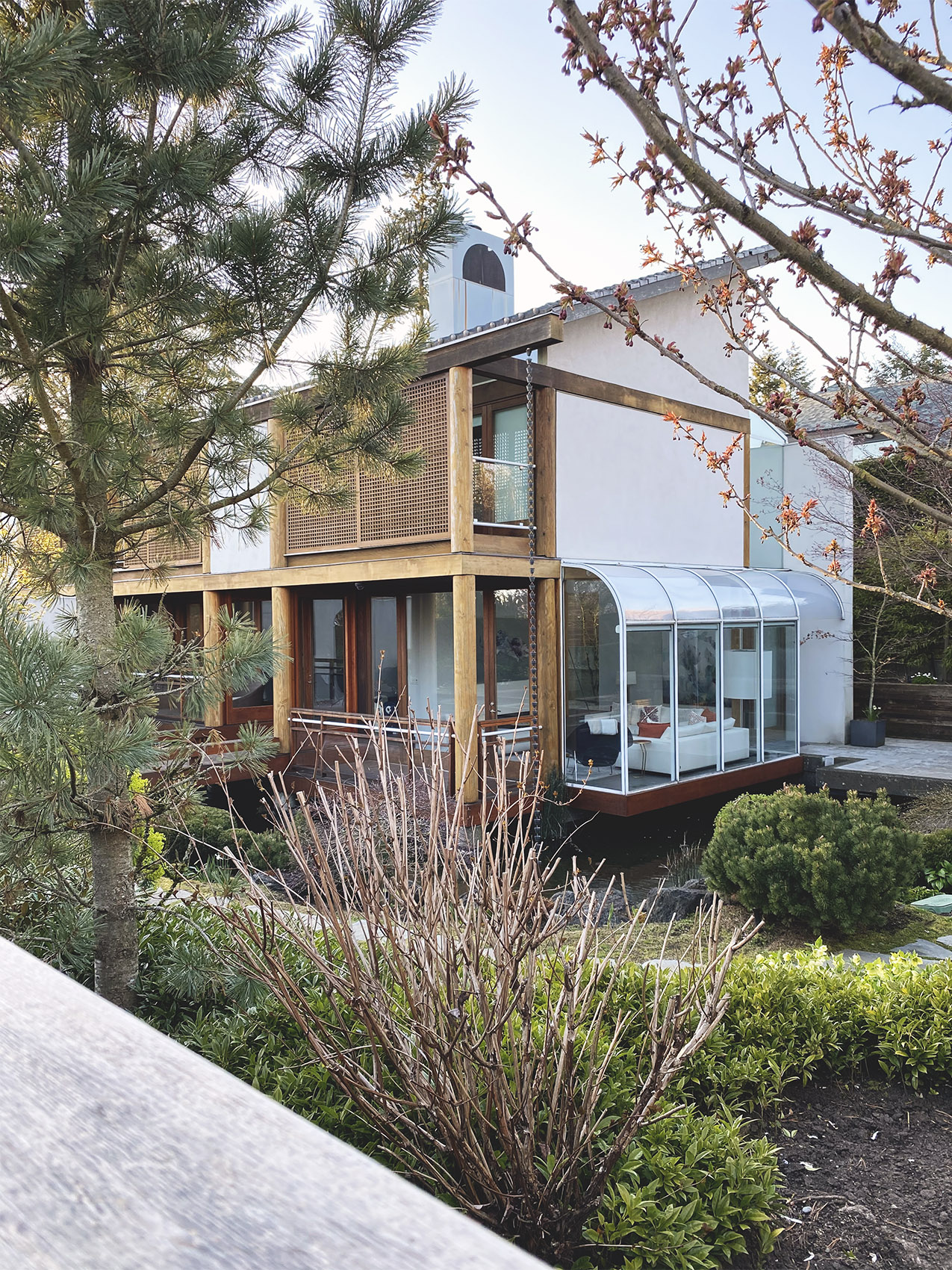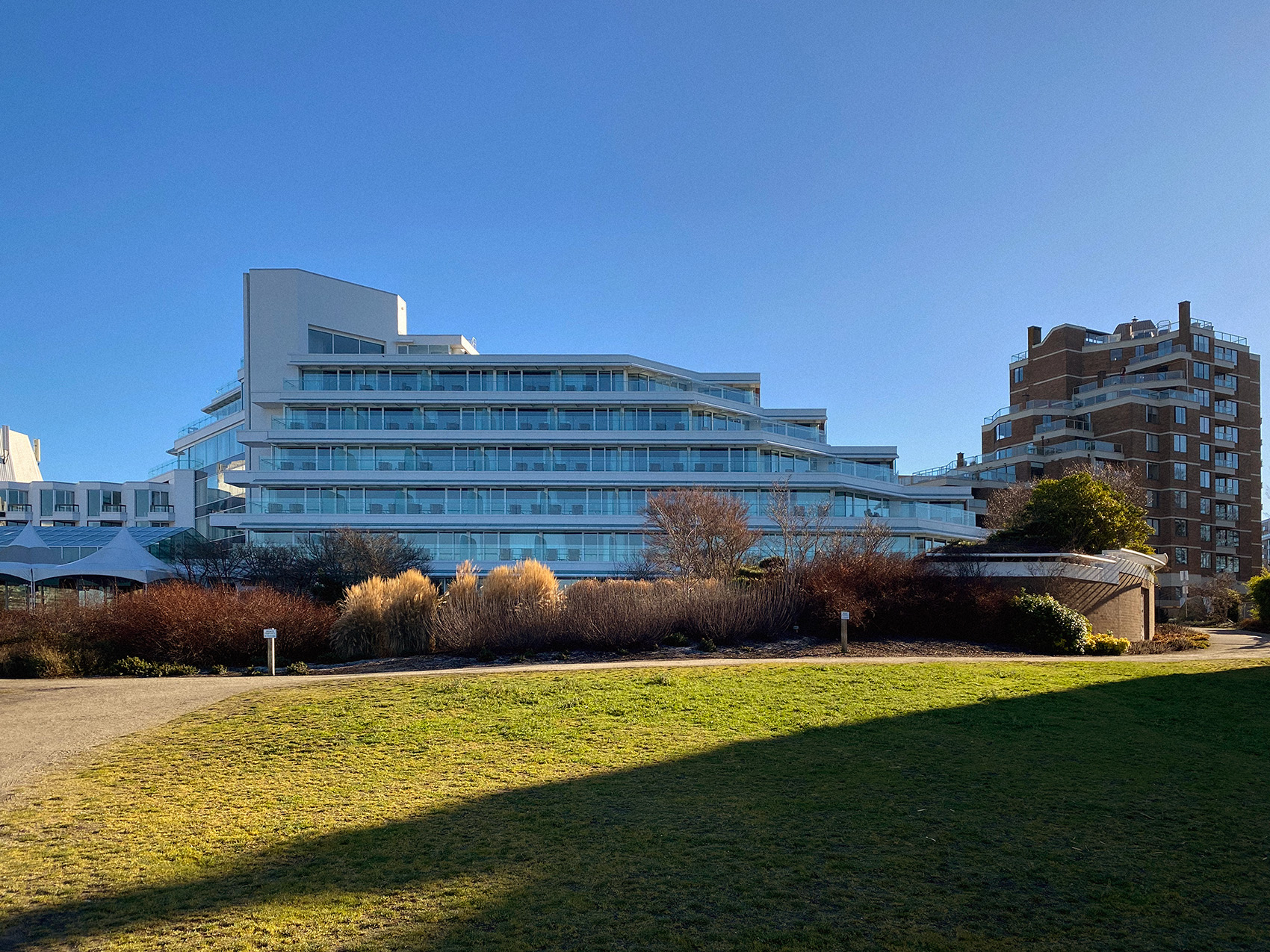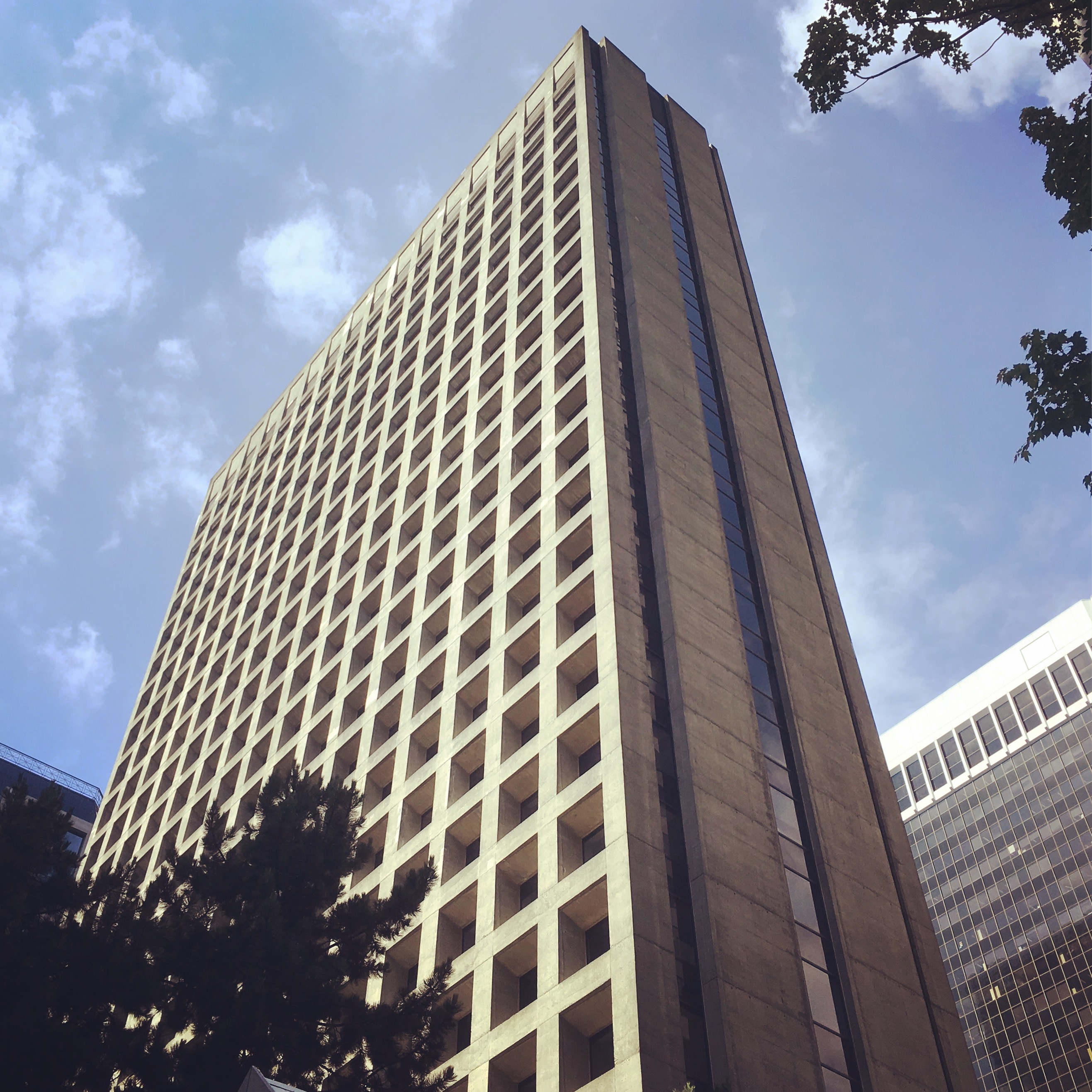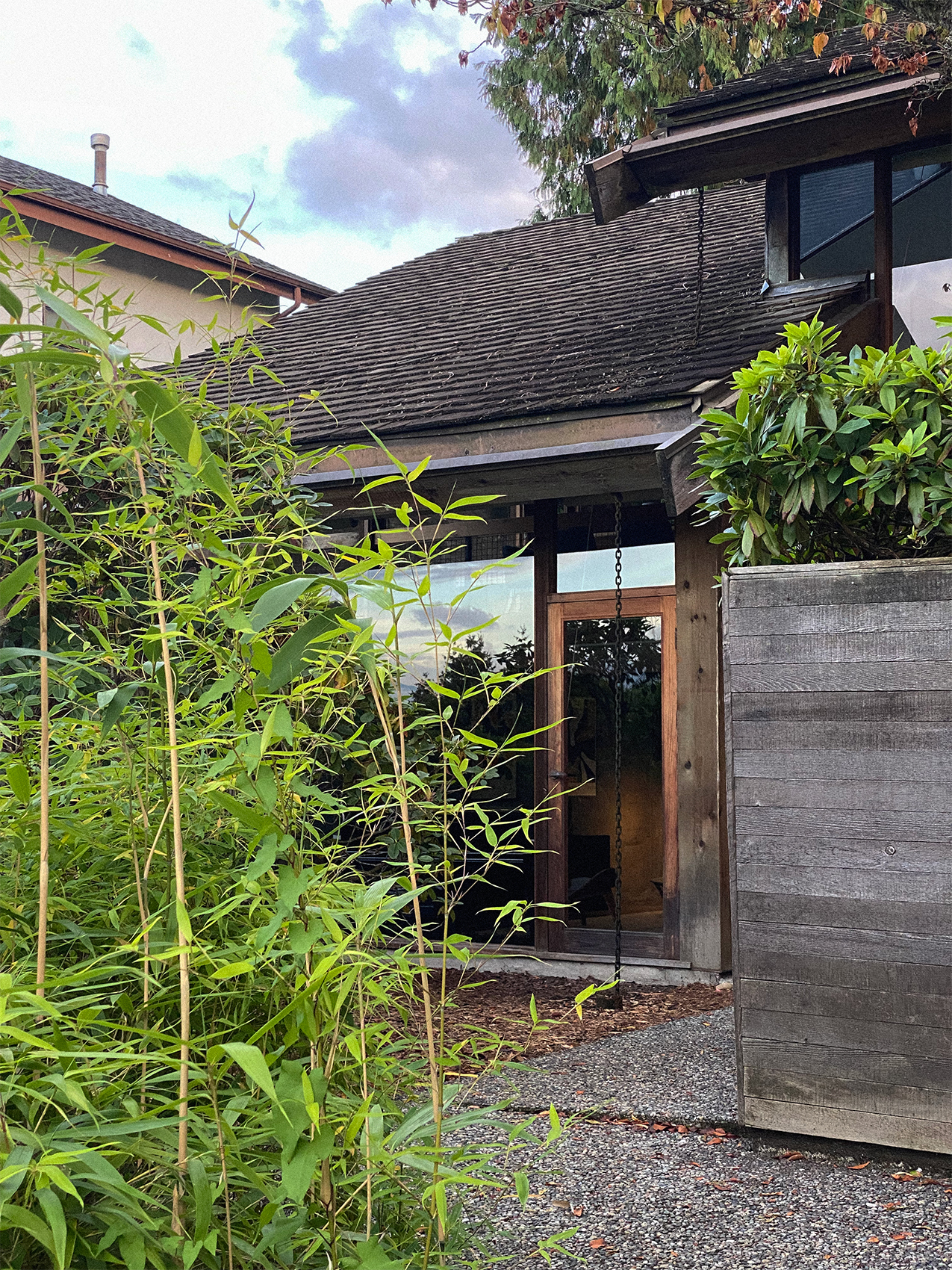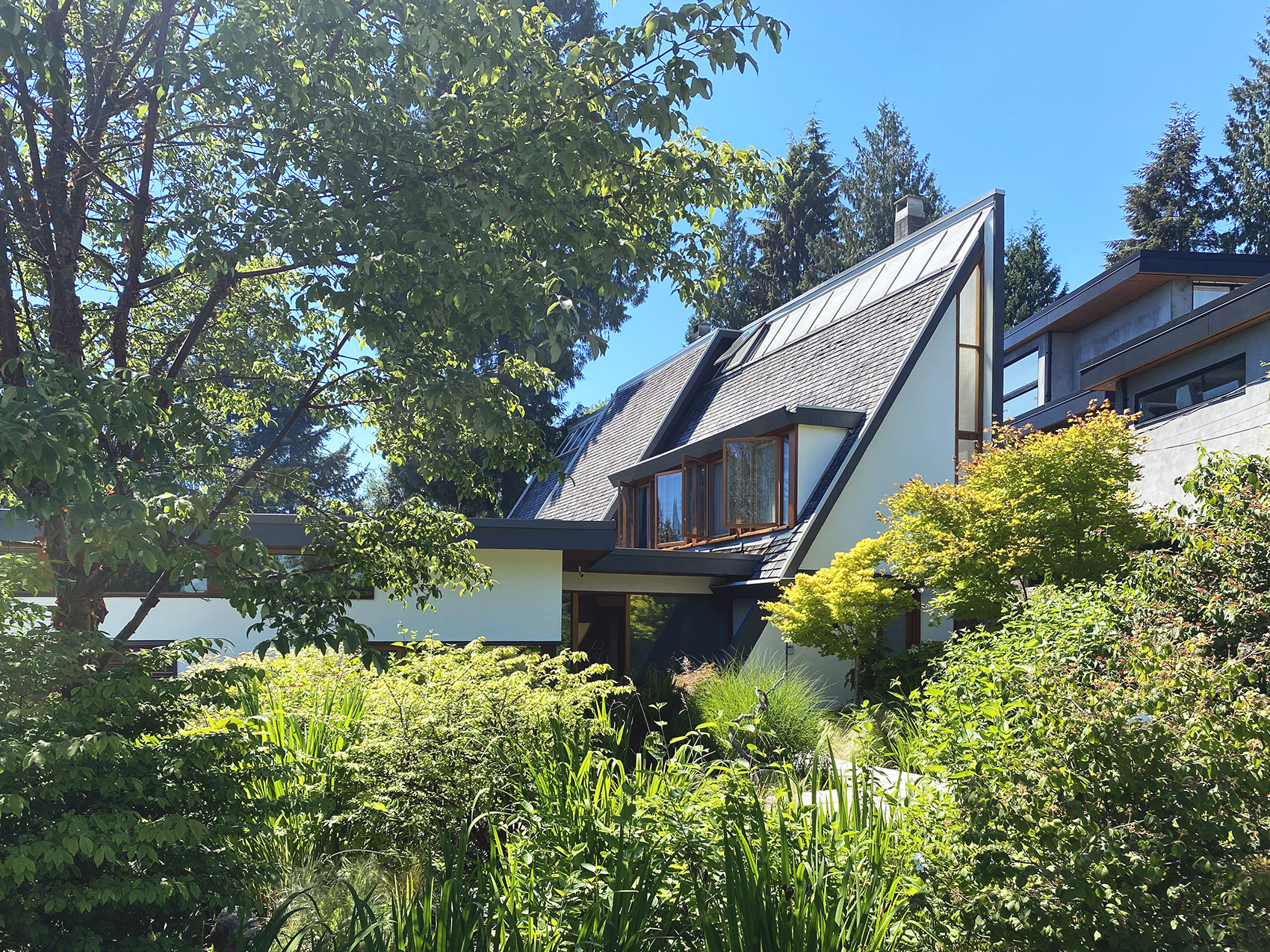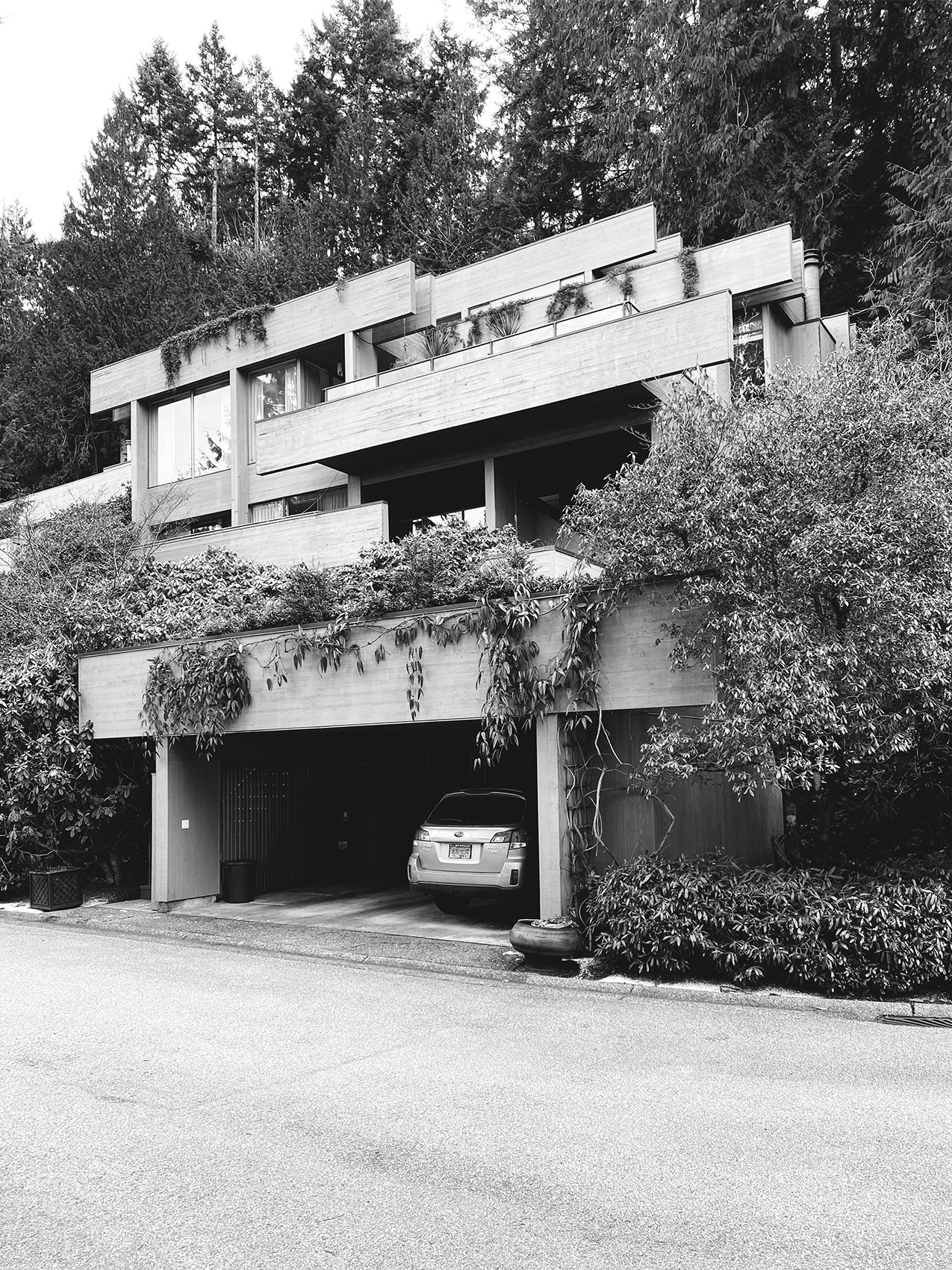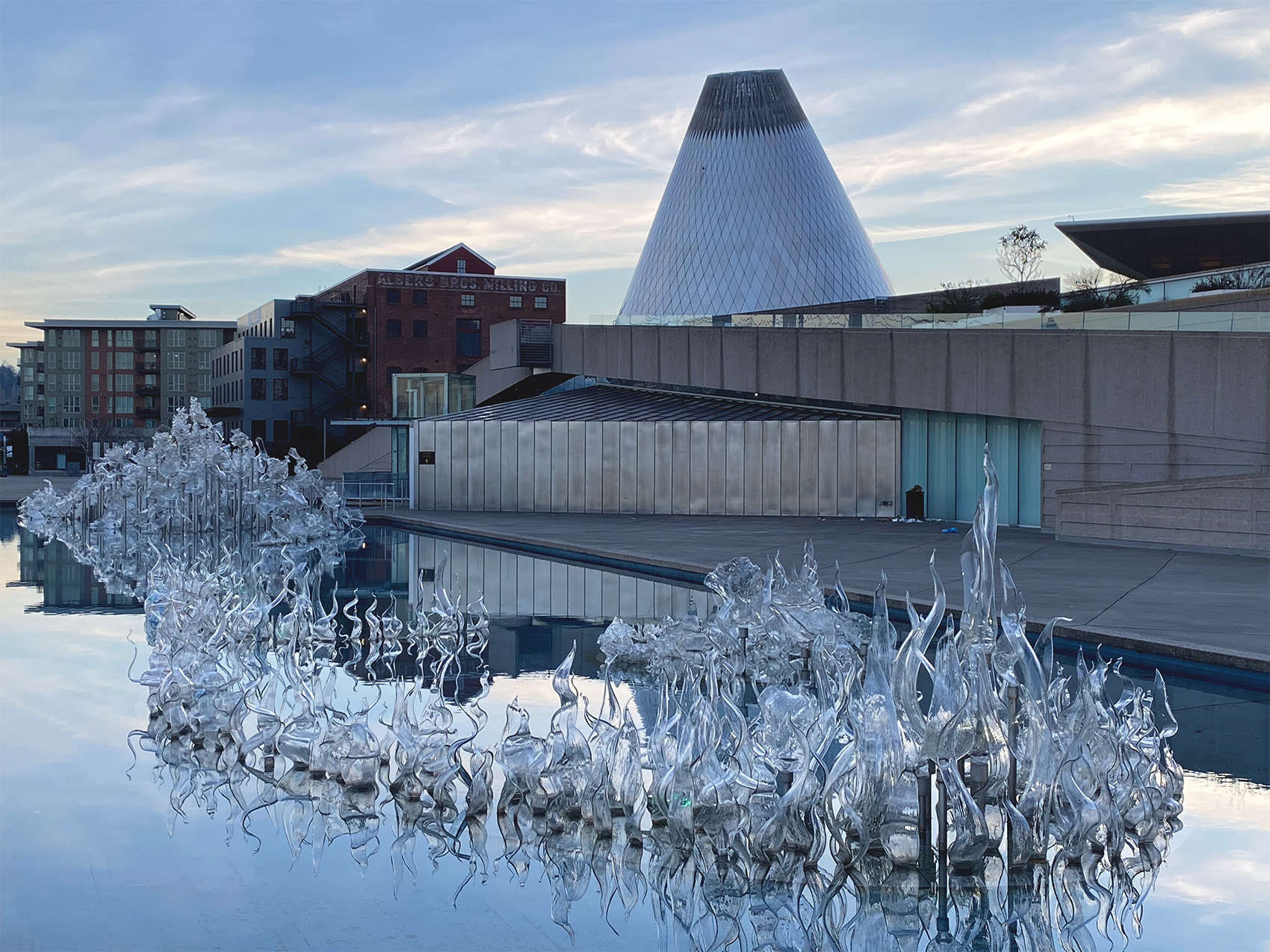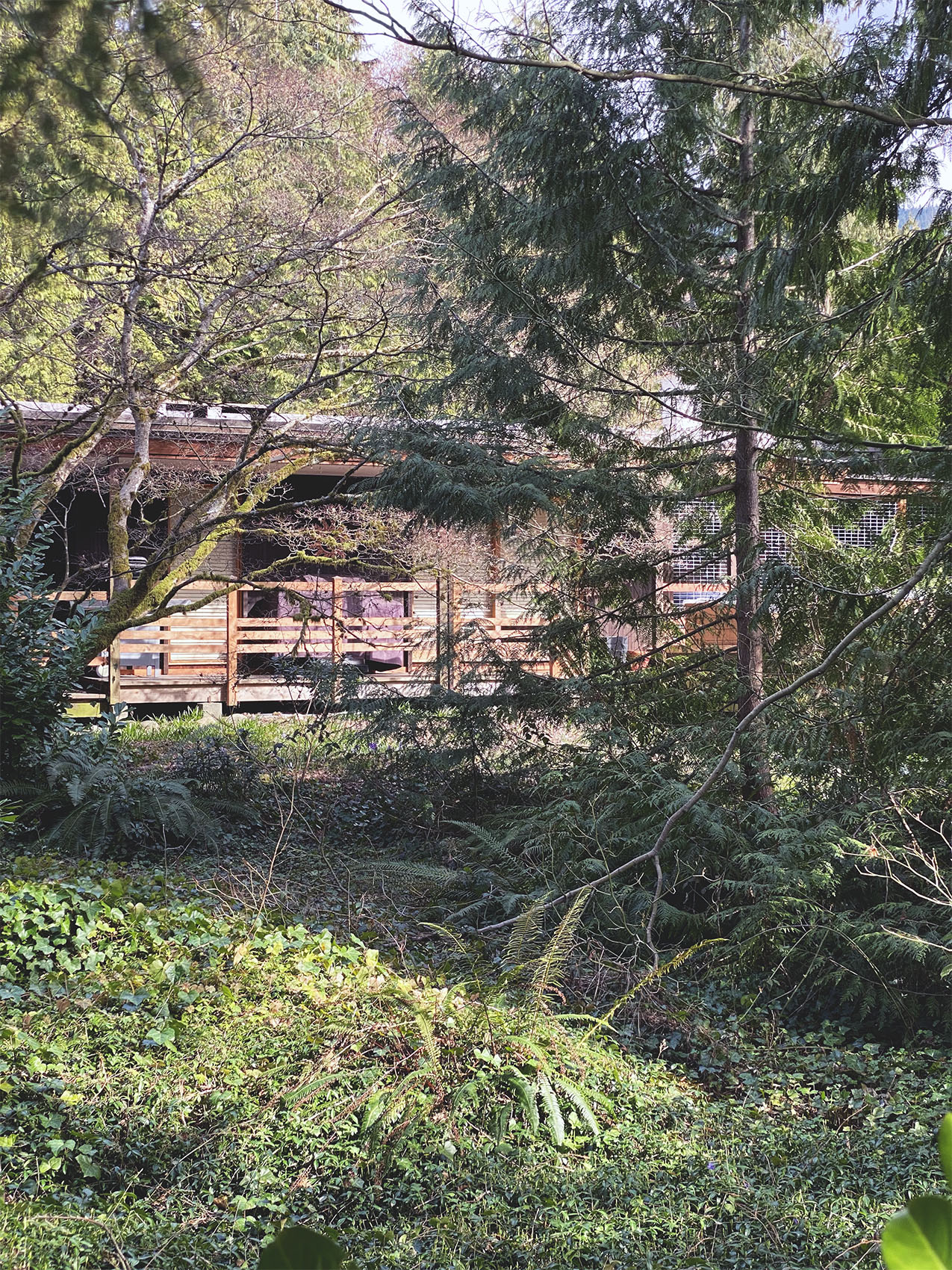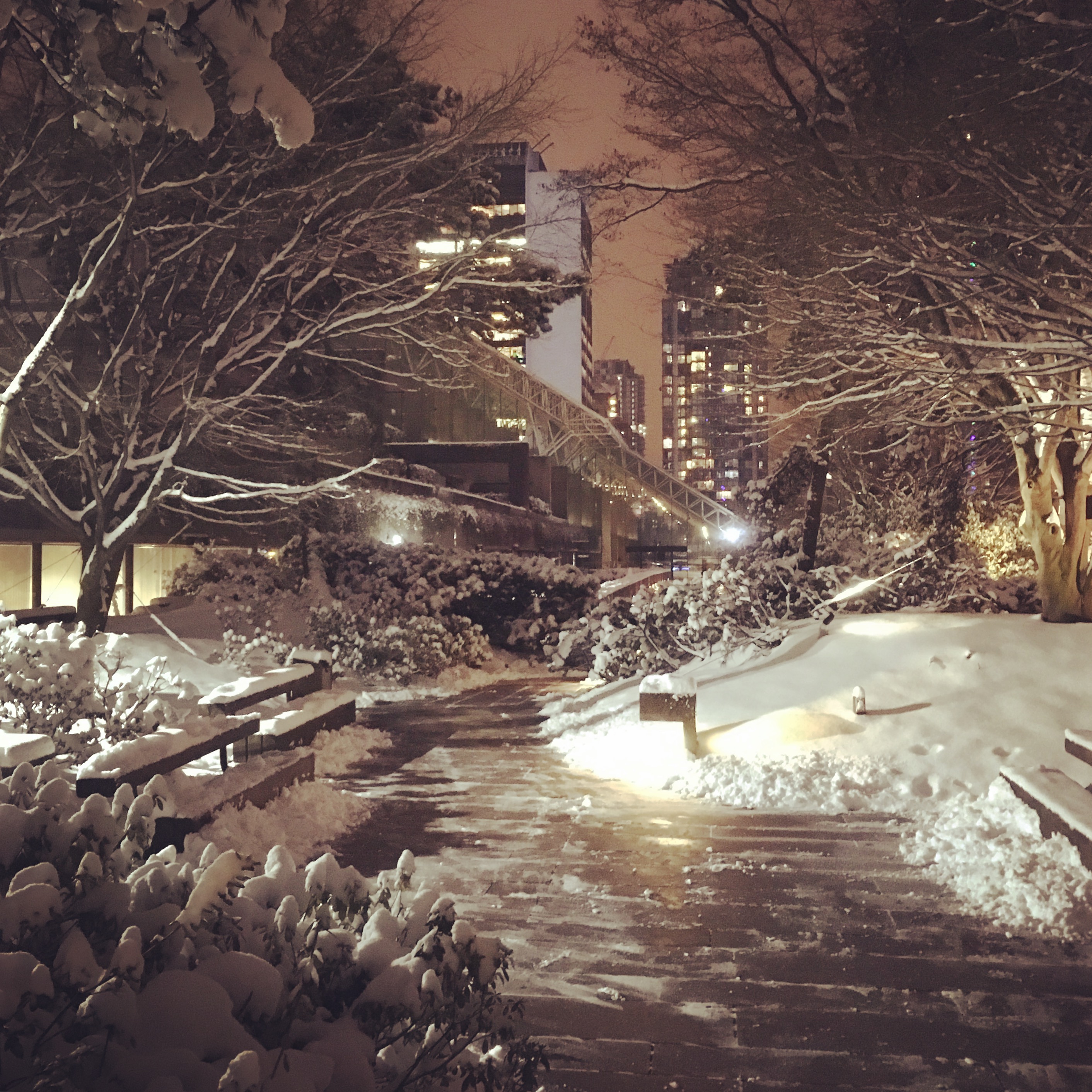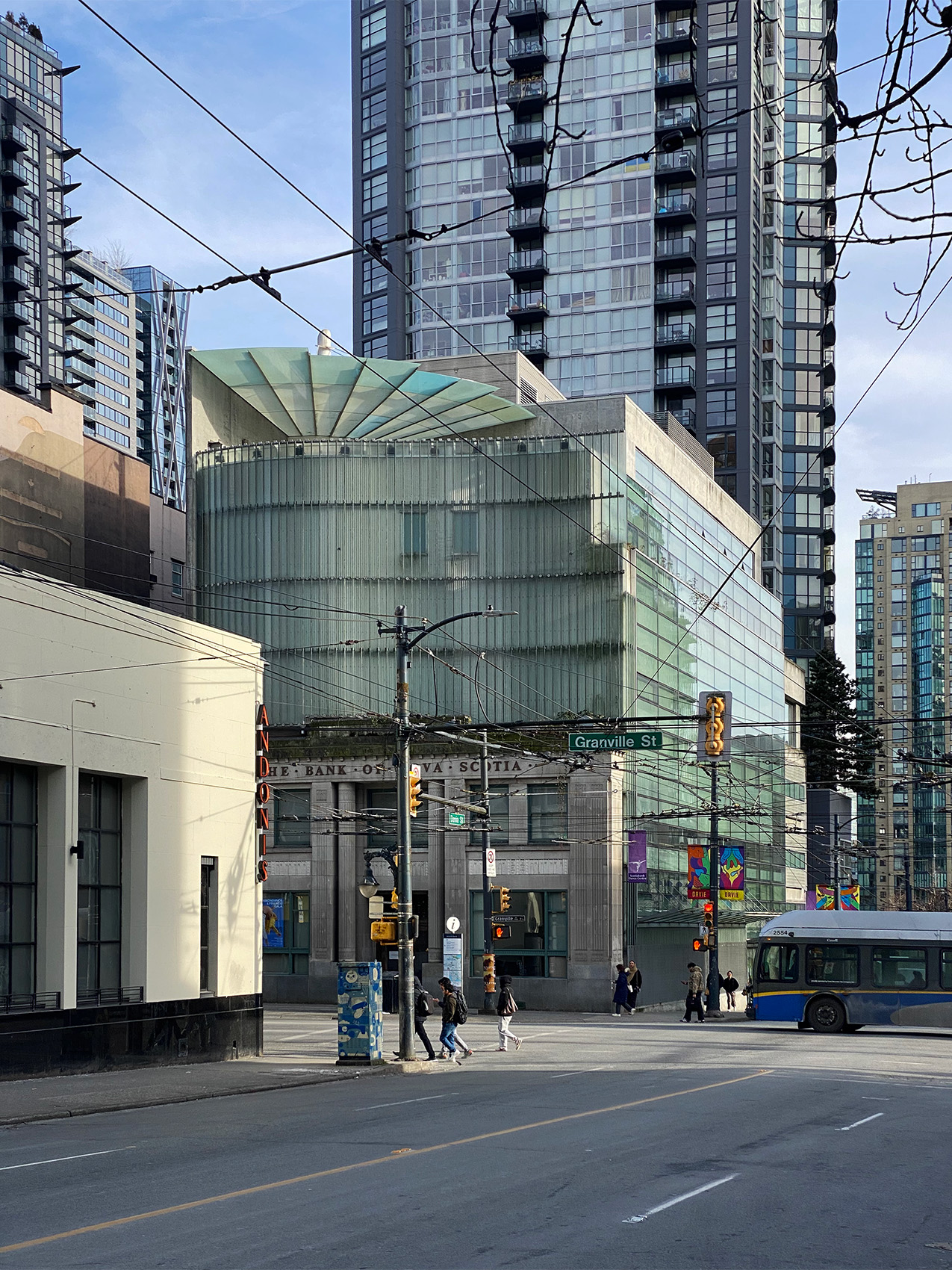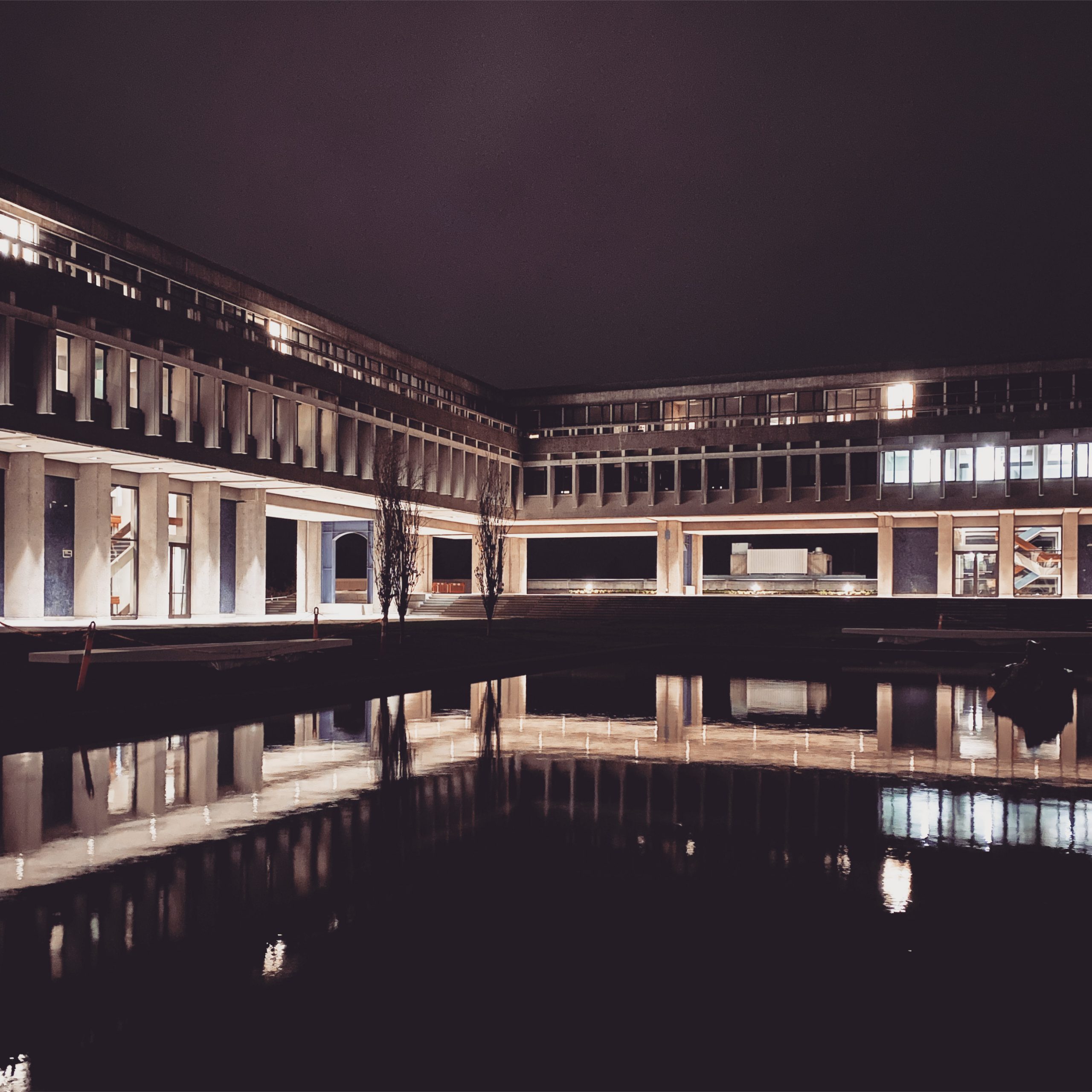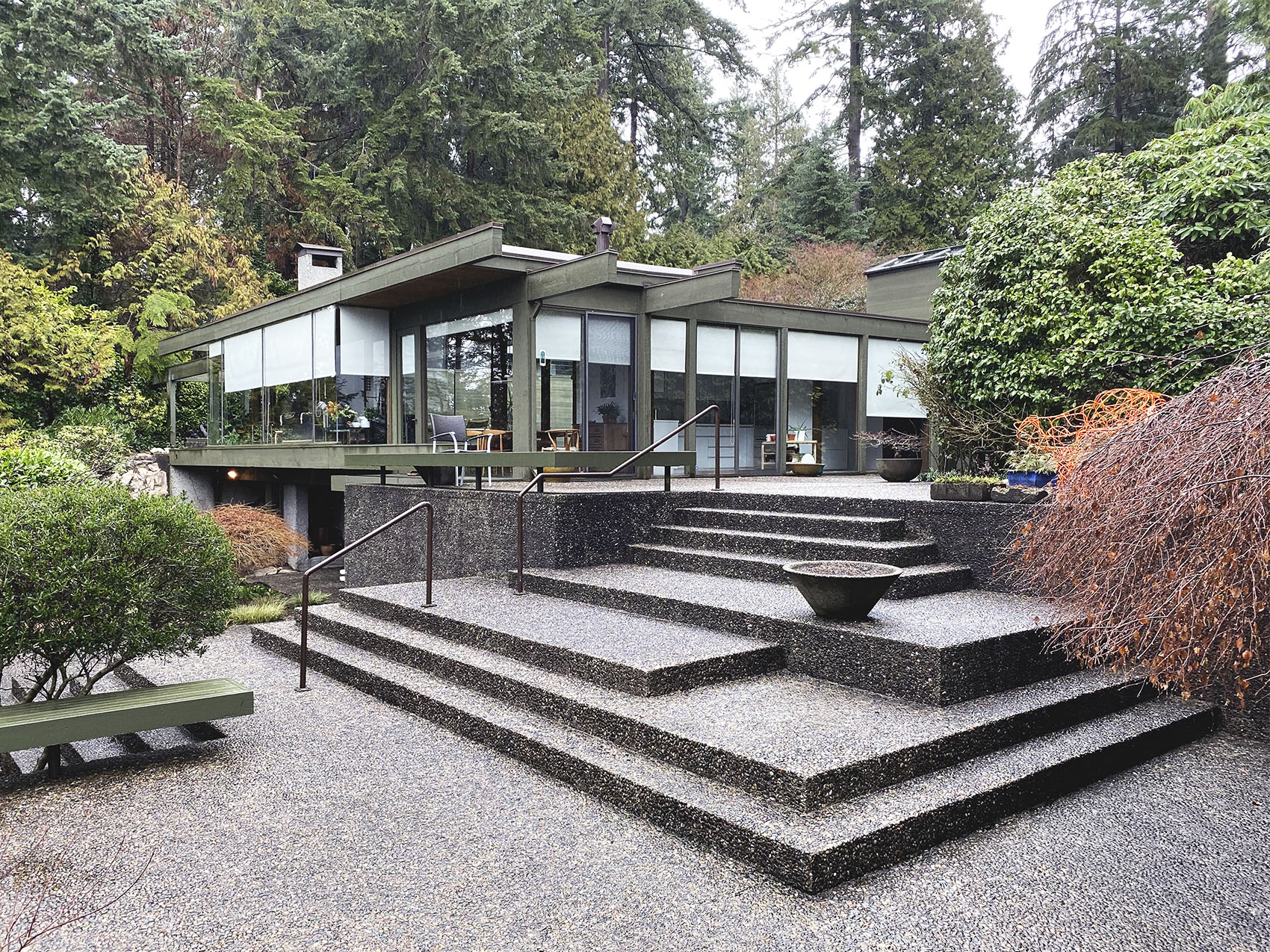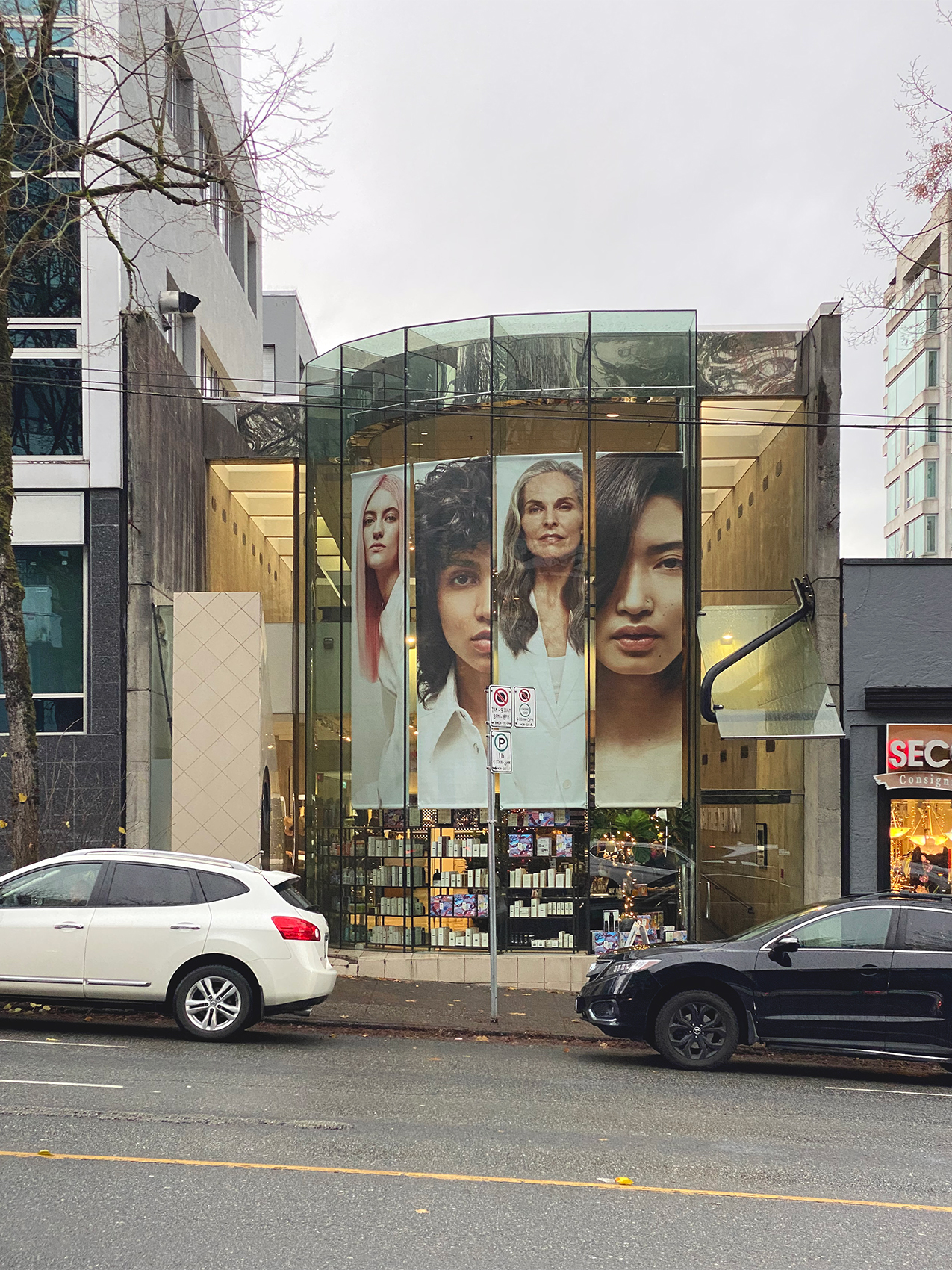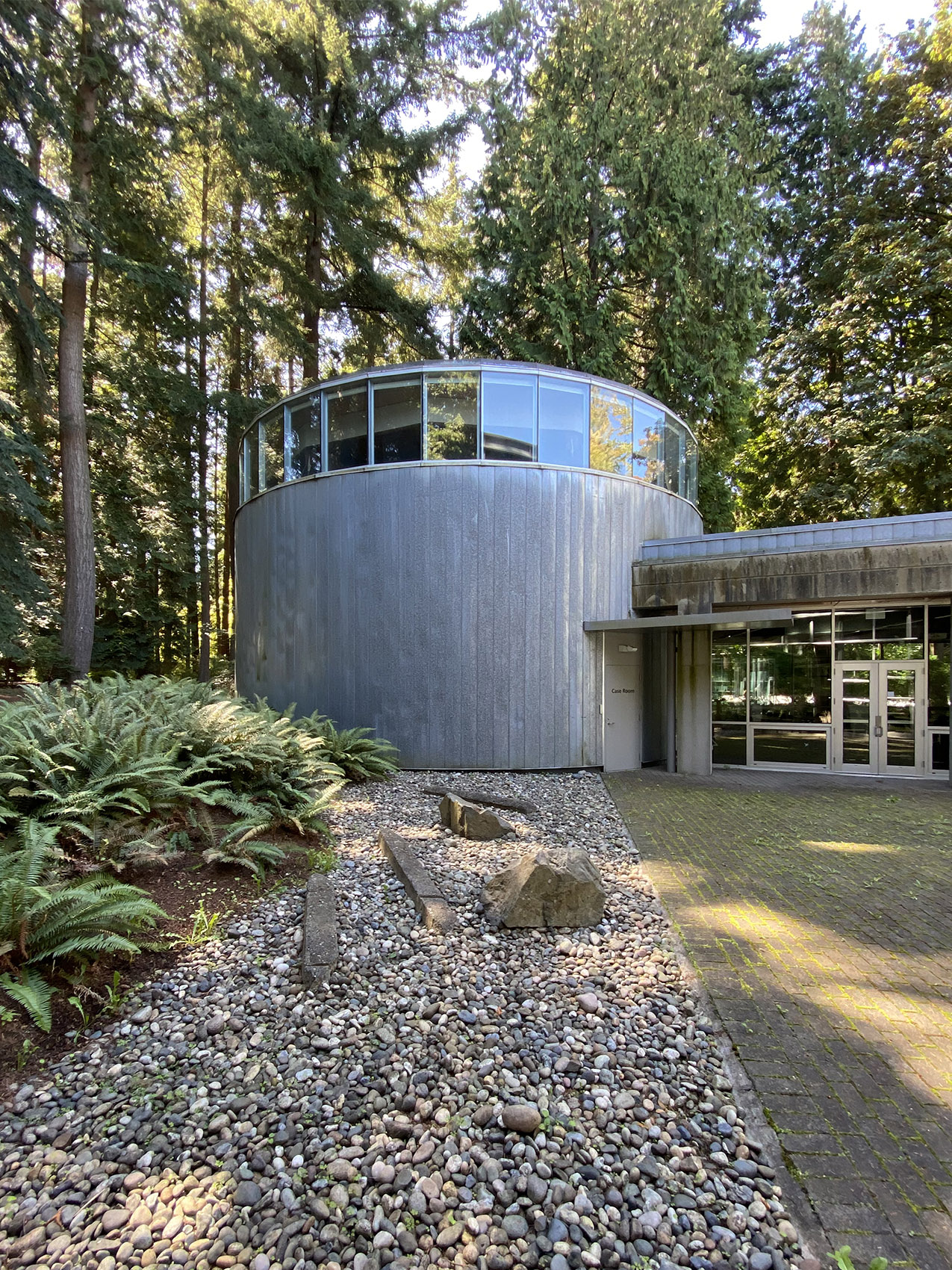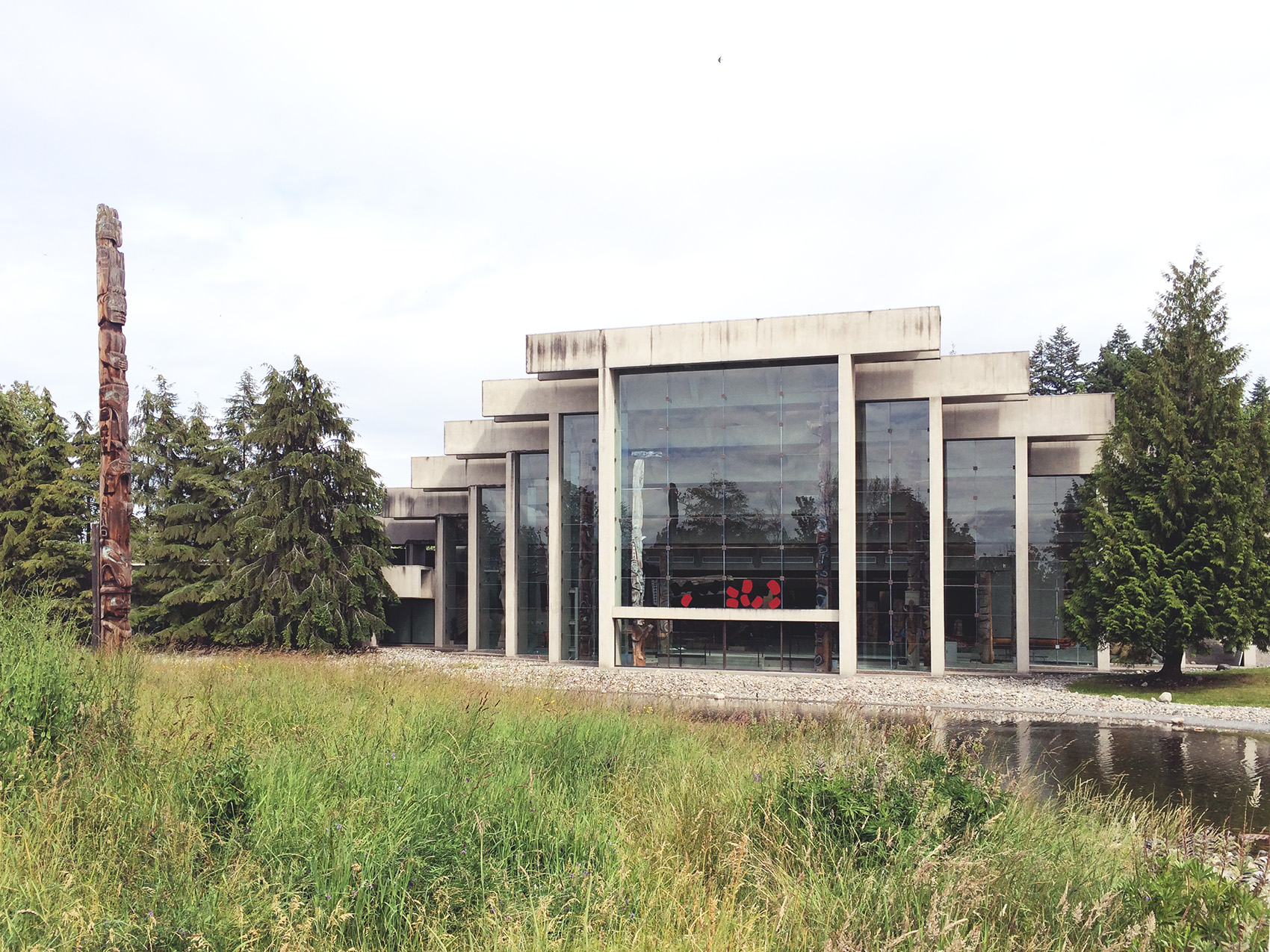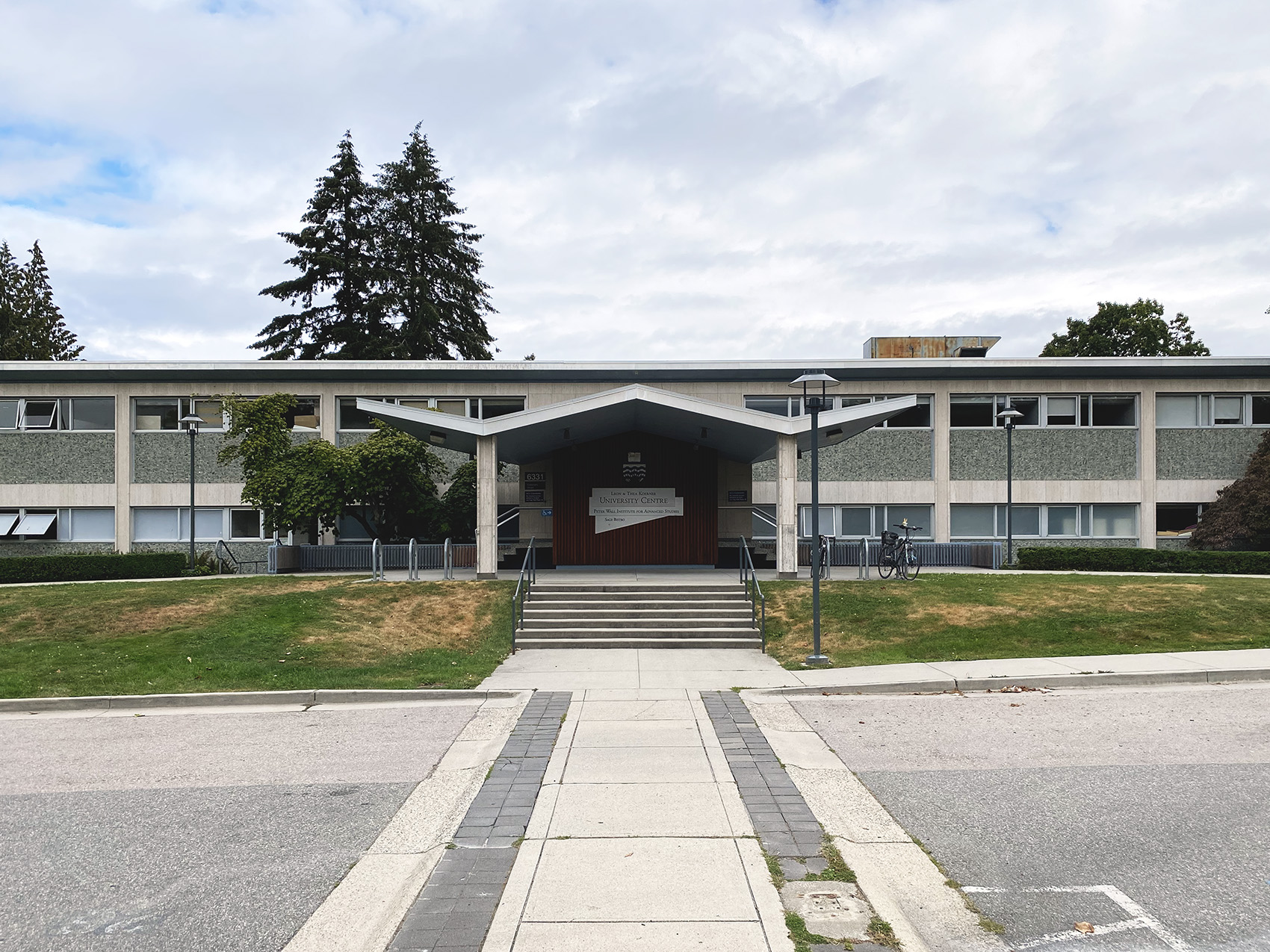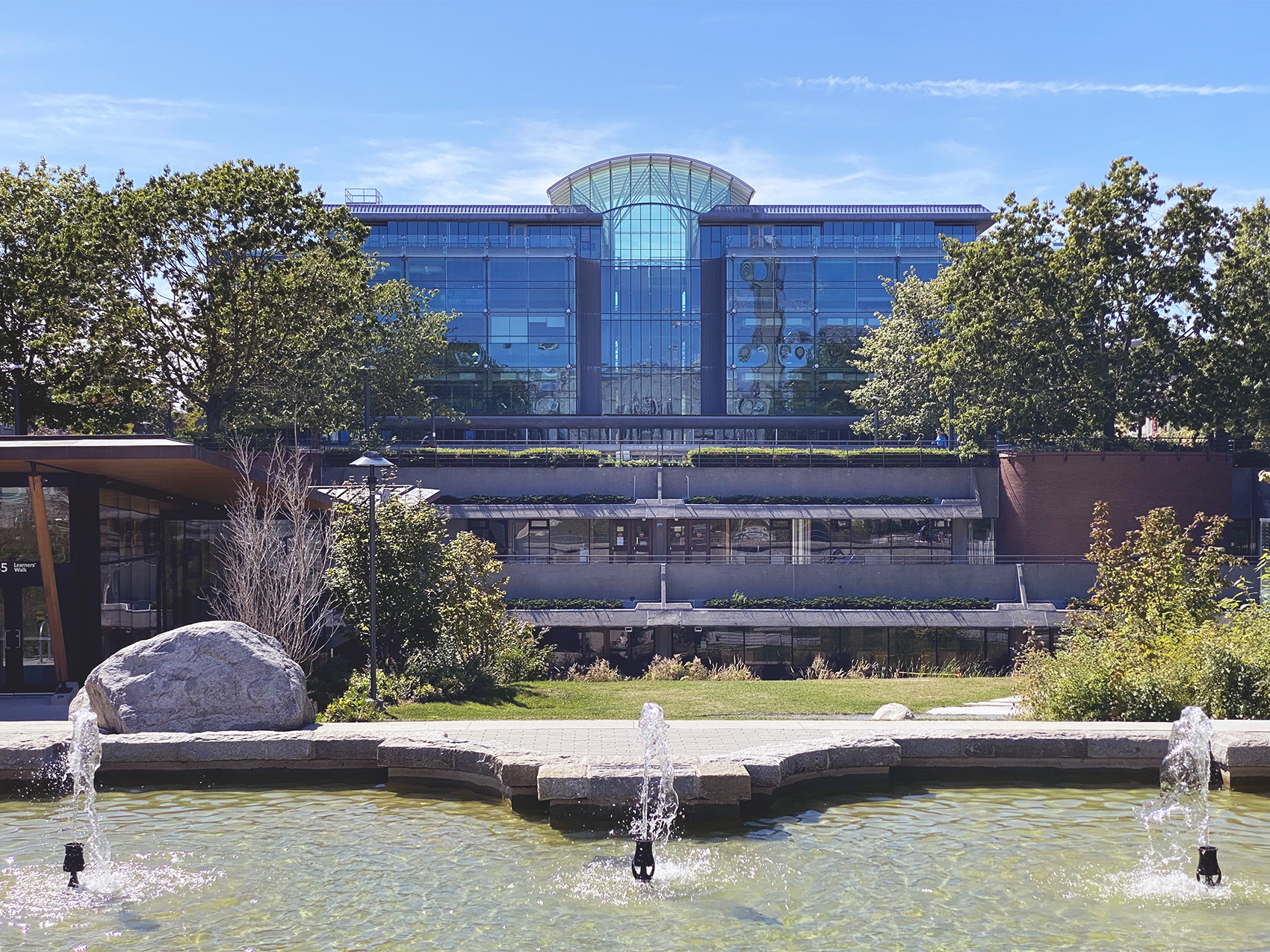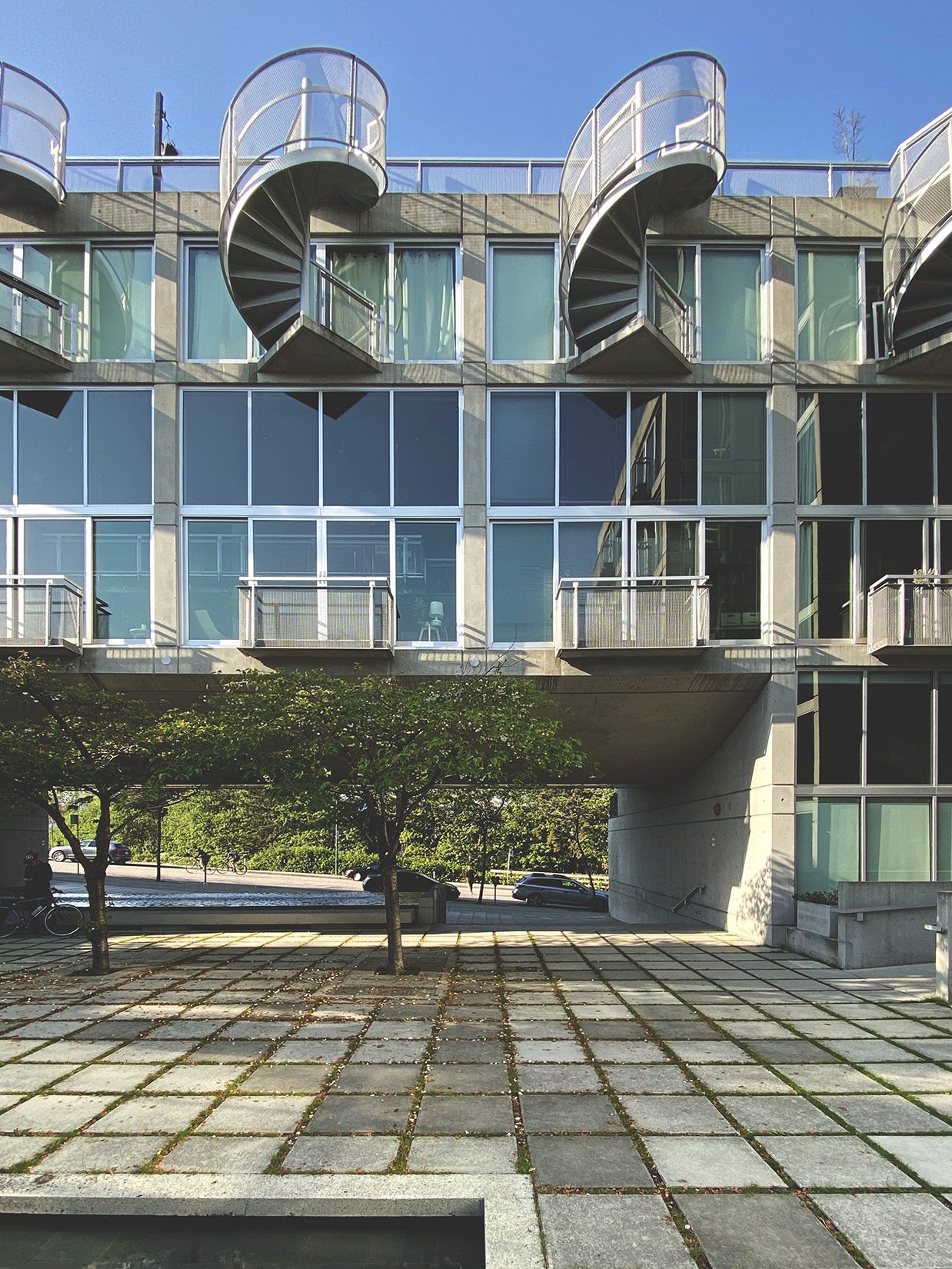Arthur Charles Erickson is perhaps the most important modern architect in Canadian history. Not only did he create some of Canada’s most iconic buildings, but he was, in large part, responsible for galvanizing and elevating to international acclaim the modern architectural identity of our country’s westernmost metropolitan region. A visionary artist, architect, and urban planner, the larger-than-life Vancouver native lead an extraordinary and illustrious career underpinned by the profound influence of international travel and the pursuit of an architecture, well ahead of its time, rooted in its physical and cultural context. A teacher and mentor to countless budding designers, Arthur was an architect with global impact who was celebrated for his progressive and technically innovative ideas, and who was unafraid to call on others to invest in better design for the betterment of our social and environmental fabric.
Arthur was first an artist, and while he saw the discipline of architecture as having many different avenues and approaches, it was this art-centric perspective that grounded his design process. In a 1986 interview, Arthur stated that one should concentrate on “drawing first. If you can be an artist and master the pencil, or the two-dimensional medium, then you have a chance in architecture.”[1] It was on this footing, as the artist-architect, that he created some of British Columbia’s defining buildings including Simon Fraser University (1963), the MacMillan Bloedel Building (1968), Museum of Anthropology (1976), Robson Square and the Provincial Law Courts (1979), the Waterfall Building (2001), and numerous residences including the Filberg House (1959), Killam/Massey House (1955), Graham House (1962), Smith House II (1966), and the Eppich Houses (1972/1988).
“Arthur Erickson is by far the greatest architect in Canada, and he may be the greatest on this continent.” – Philip Johnson
Arthur Erickson was born in Vancouver, British Columbia on June 14, 1924. His parents, Myrtle Chatterson and Oscar Erickson, raised their family on the city’s westside in an environment abound with art, culture, and community advocacy. Oscar, a dry goods salesman and a veteran of the First World War, who had endured life-altering injuries, had an interest in realistic landscape painting and gave much time to veteran supports and community organizations. Similarly, Myrtle, described as an eccentric socialite and an artist, had an interest in exploring modernist expression in painting and collage. Like Oscar, she was heavily involved in the community advocating for arts venues and helping to establish the Vancouver Art Gallery. It comes as no surprise that a young Arthur Erickson would take on a love for the arts and culture, and an enduring commitment to bettering the community, along with a peculiar curiosity for natural life forms.
As a young student, Arthur would attend Point Grey Junior High School and Prince of Wales High School, graduating in 1942. Freshly out of grade school, he would spend several summers working at a logging camp in Quatsino Sound. He would eventually enlist in the Canadian Armed Forces, serving in India, British Ceylon, and Malaysia as part of the Canadian Army Intelligence Corps. On his return to Vancouver, Arthur would study at the University of British Columbia while vacillating between a life in the arts or a career in foreign diplomacy, along with a developing interest in architecture. Through a series of consults with the likes of B.C. Binning, Lawren Harris, Gordon Smith, Richard Neutra, and an article about Frank Lloyd Wright’s Taliesin West in the pages of Fortune Magazine, architecture eventually came into focus. “If it was possible to create such a work of art in architecture, I was going to become an architect,” Arthur recalled.[2] He would graduate with a Bachelor of Architecture (Honours) from McGill University in 1950.
After turning down an offer to apprentice at Taliesin West, Arthur instead spent several formative years traveling the Mediterranean, the Middle East, and Japan. To say that these years were pivotal would be an understatement. Using this opportunity to study the cultures, climates, landscapes, and their associated architectures, these transformative lessons profoundly influenced the essence of his design philosophy which he would carry with him throughout his career. He would return to Vancouver, ever the worldly traveller, taking up brief stints at McCarter & Nairne and Sharp & Thompson, Berwick, Pratt.
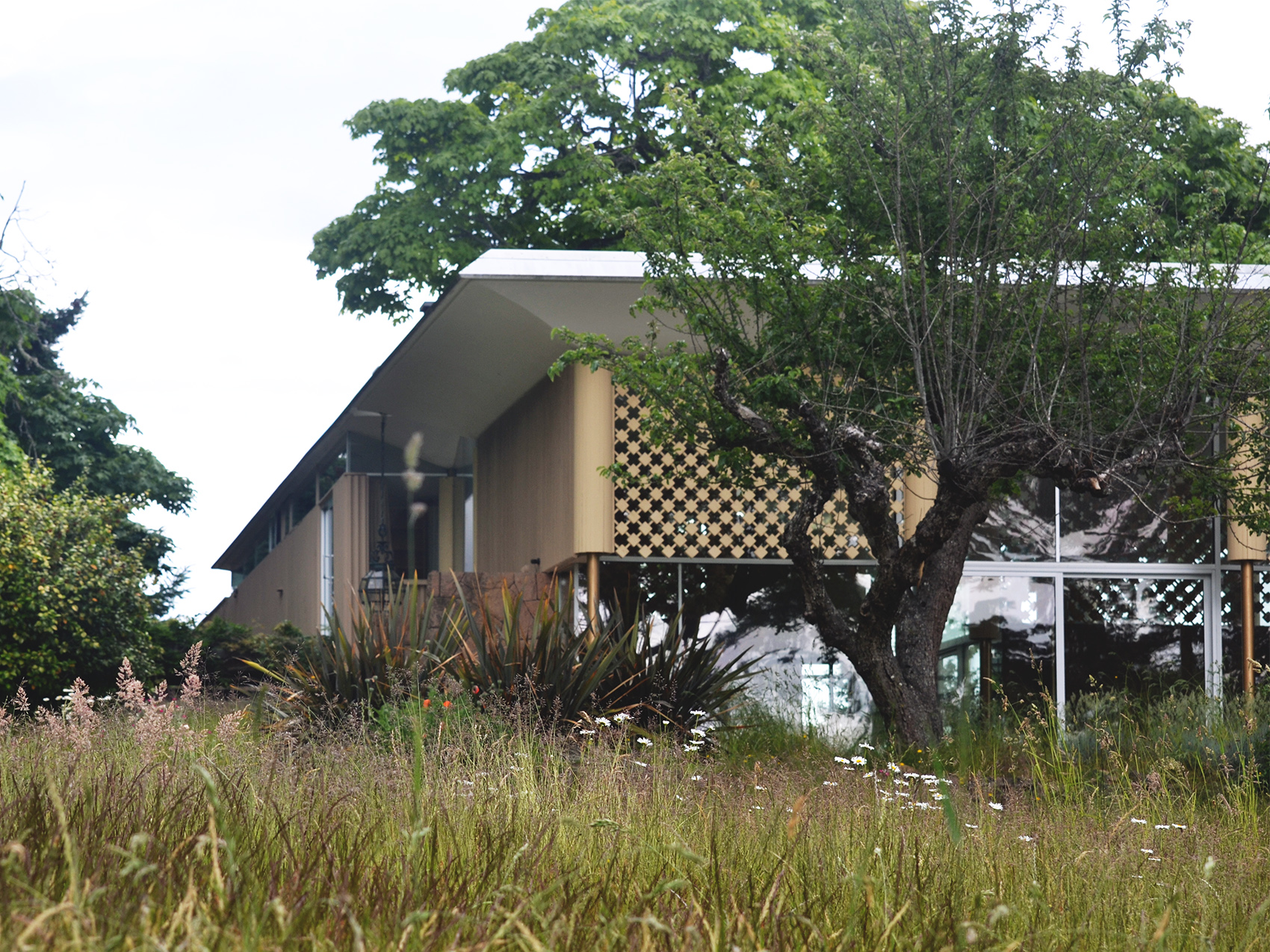
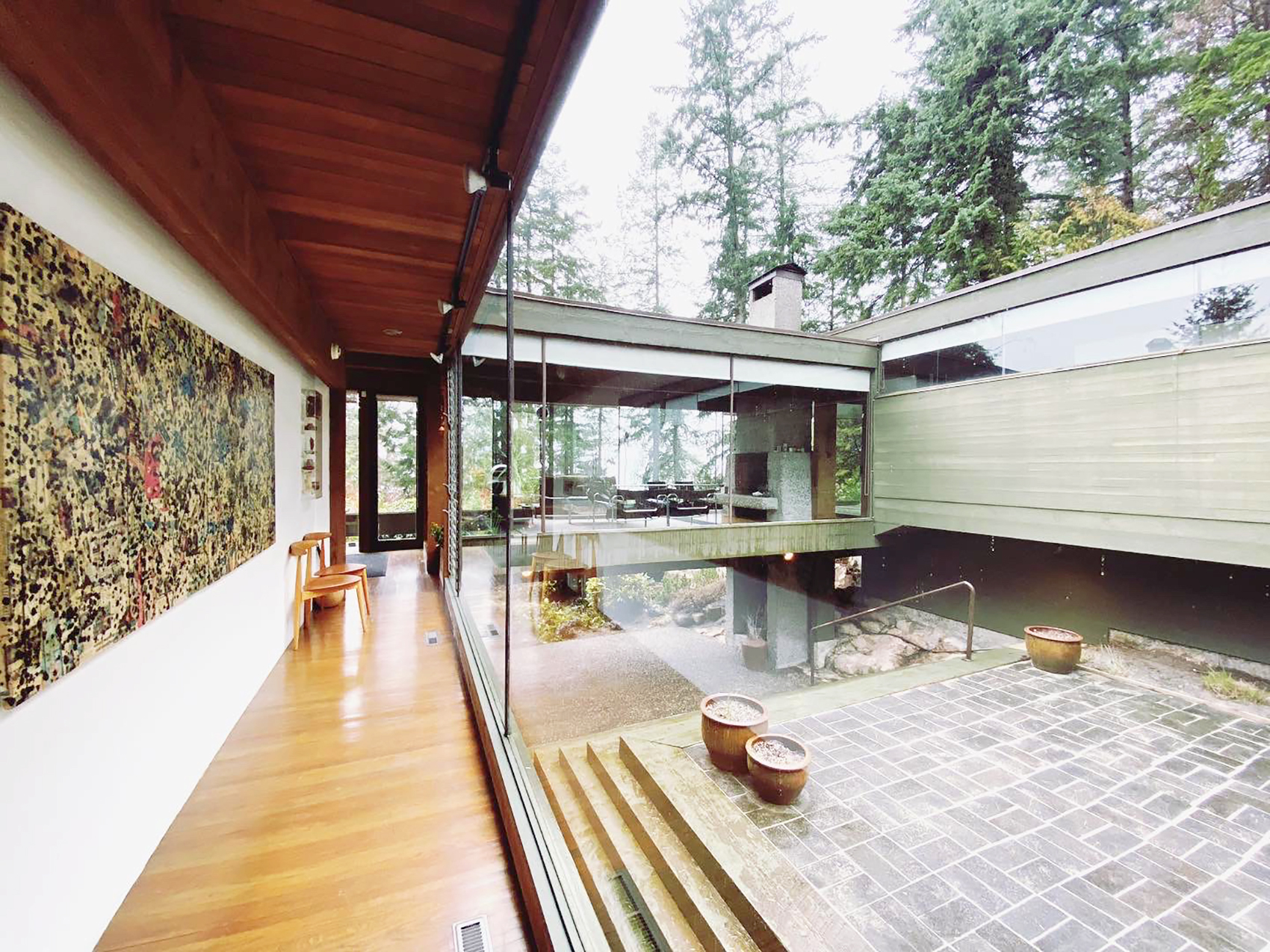
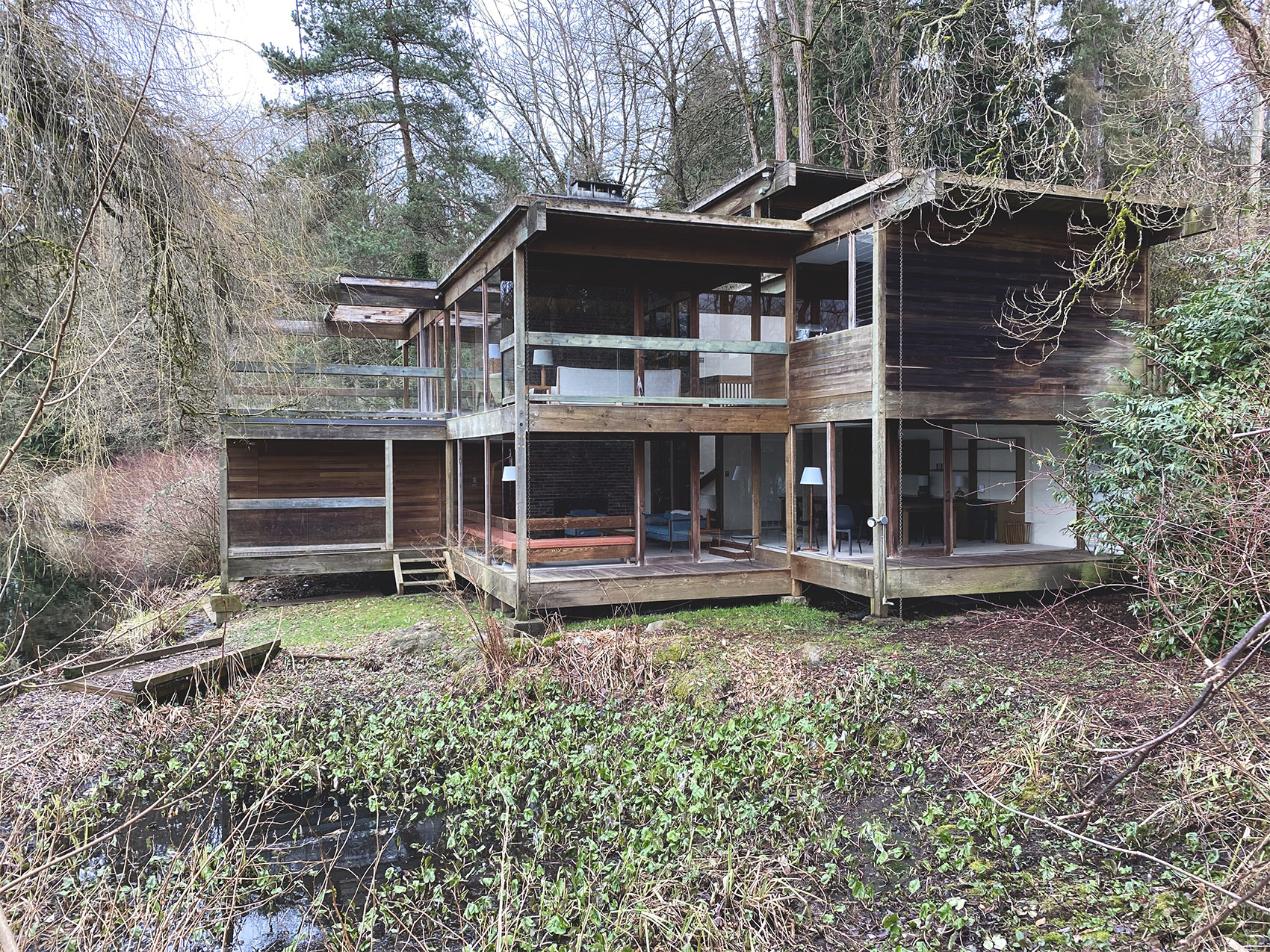

Collection of West Vancouver Art Museum.
In 1953, while at S&TBP, Arthur’s career began to take shape. It was in this year that he would be introduced to another budding architect, Geoffrey Massey. They would become quick friends and spend several years living together in Vancouver’s West End. This was happening at a time when Vancouver was emerging as a hot bed for experimentation in domestic modernism and the single-family home was a young architect’s playground. Arthur and Geoffrey’s friendship soon developed into an award-winning collaboration that would produce numerous houses that have since become synonymous with exemplary West Coast Modern architecture – the Stegeman House, Smith House I, the Killam/Massey House. While space would grow between them, and Arthur would take up a teaching position at the University of Oregon, the pair would come together again in 1963 to win the design competition for the new Simon Fraser University Burnaby Campus. This would set in motion the formalization of their partnership, Erickson/ Massey Architects, a firm that would become known as visionary, responsible not only for many of our most celebrated and iconic buildings – among them the MacMillan Bloedel Building – but also for influencing an entire generation of our most prominent designers. Their partnership would continue until 1972.
Arthur would of course continue in private practice establishing the eponymous firm Arthur Erickson Architects. Based in Vancouver, the firm would grow at times to include offices in Los Angeles, Toronto, Kuwait, and Saudi Arabia. He continued to land ever larger commissions and further propel to international acclaim, becoming a globally sought architect. His noted designs included the Bank of Canada in Ottawa, Roy Thomson Hall in Toronto, California Plaza in Los Angeles, the Canadian Chancery in Washington DC, the Museum of Glass in Tacoma, the San Diego Convention Centre, and the Kuwait Oil Sector Complex in Kuwait City. In Vancouver, a city that he loved so deeply, his works quickly and to this day became defining urban and cultural landmarks including the Provincial Law Courts and Robson Square, the Evergreen Building, and the Museum of Anthropology. Architecture critic Trevor Boddy notes, “you can look at his career as being one phase ahead of the city he loved so much, and not afraid of pushing it on to the next stage. The way he prodded and primed and hoped that Vancouver would become a better place, more diverse, more dense, more visually engaging, more beautiful, the notion that this geographically isolated city could be a global contender.”[3] In 1981, Arthur was named a companion of the Order of Canada.
“The most pressing need in architecture today, I am convinced, is to be sensitive to context.” – Arthur Erickson
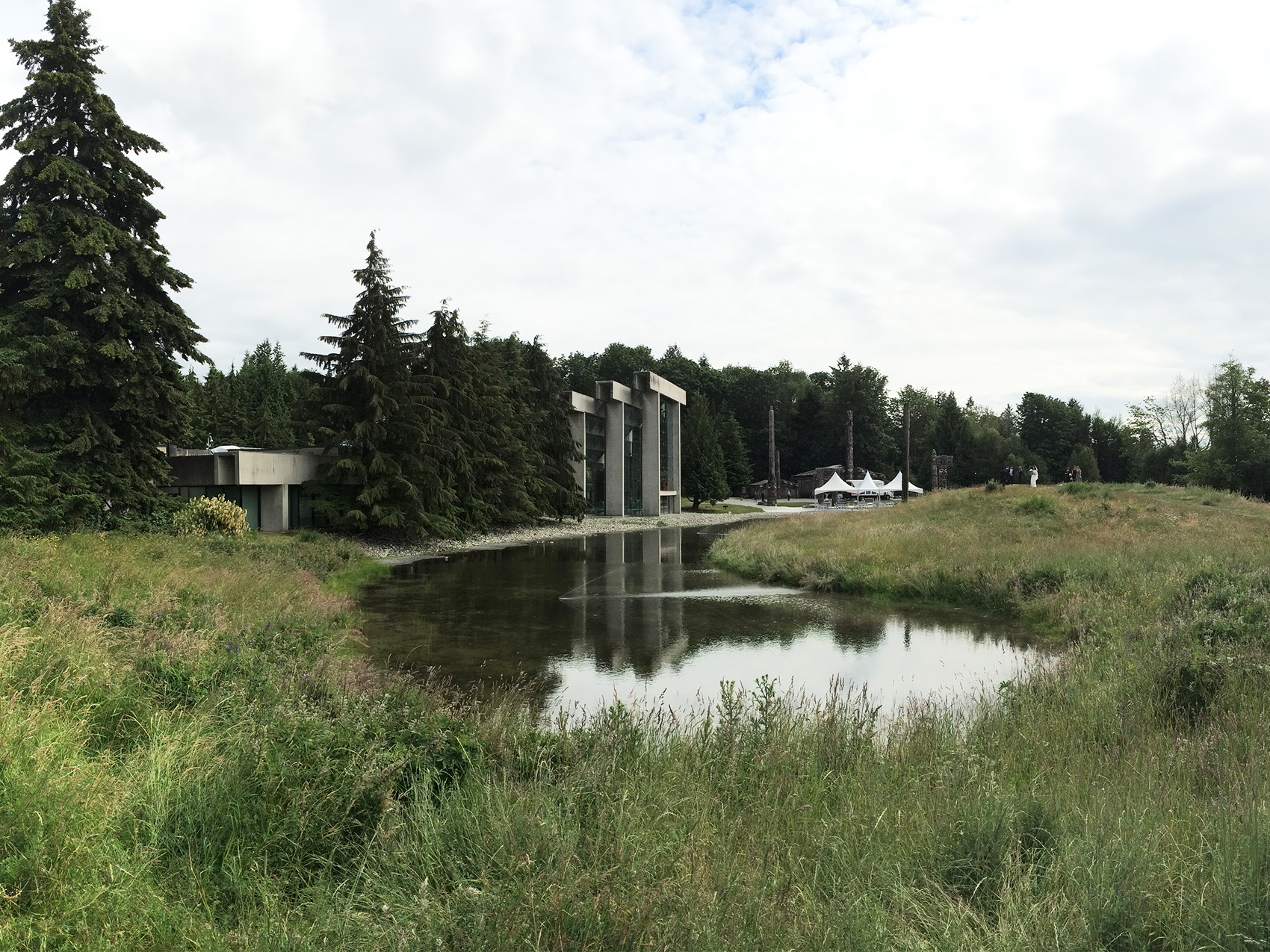
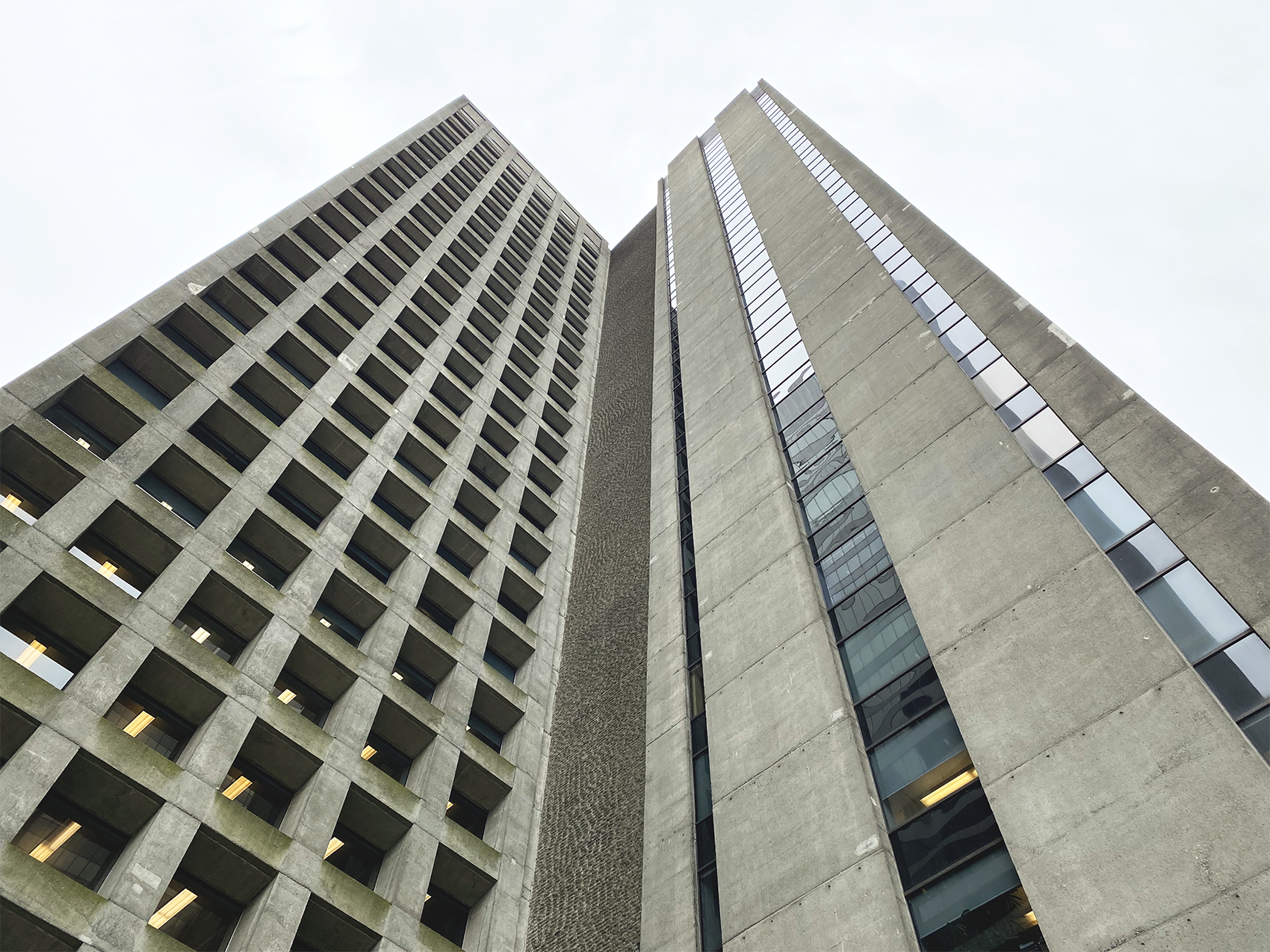
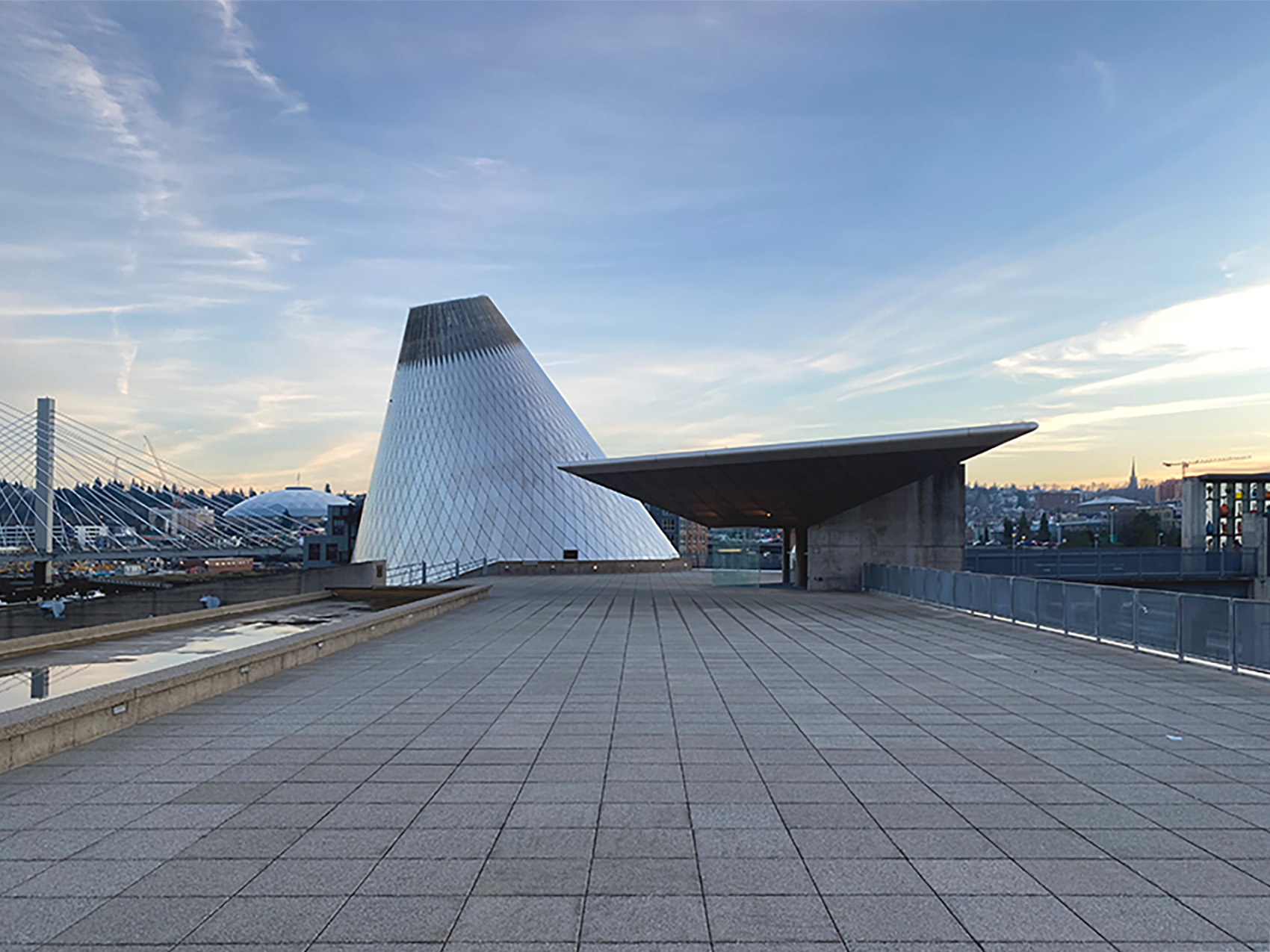
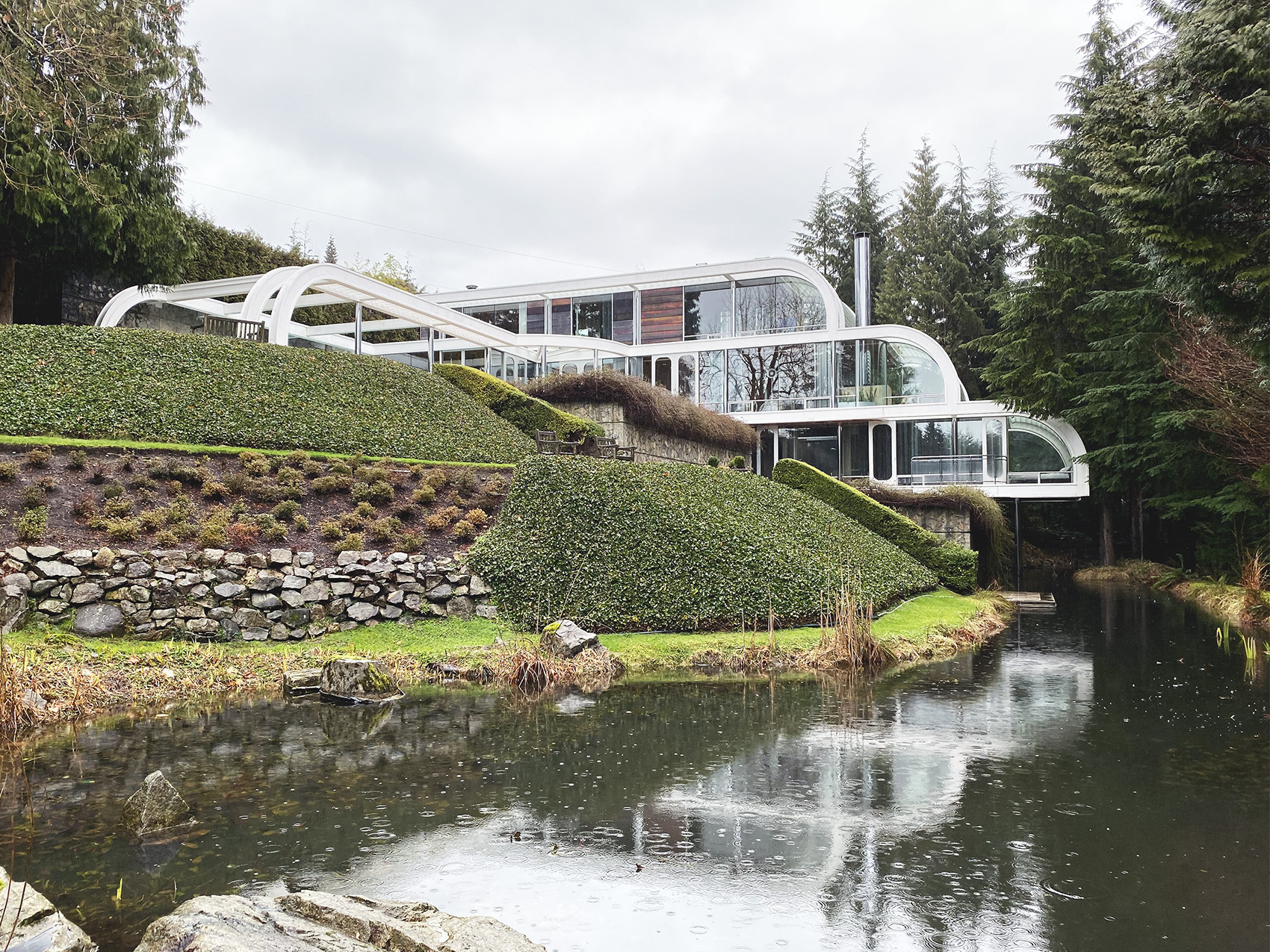
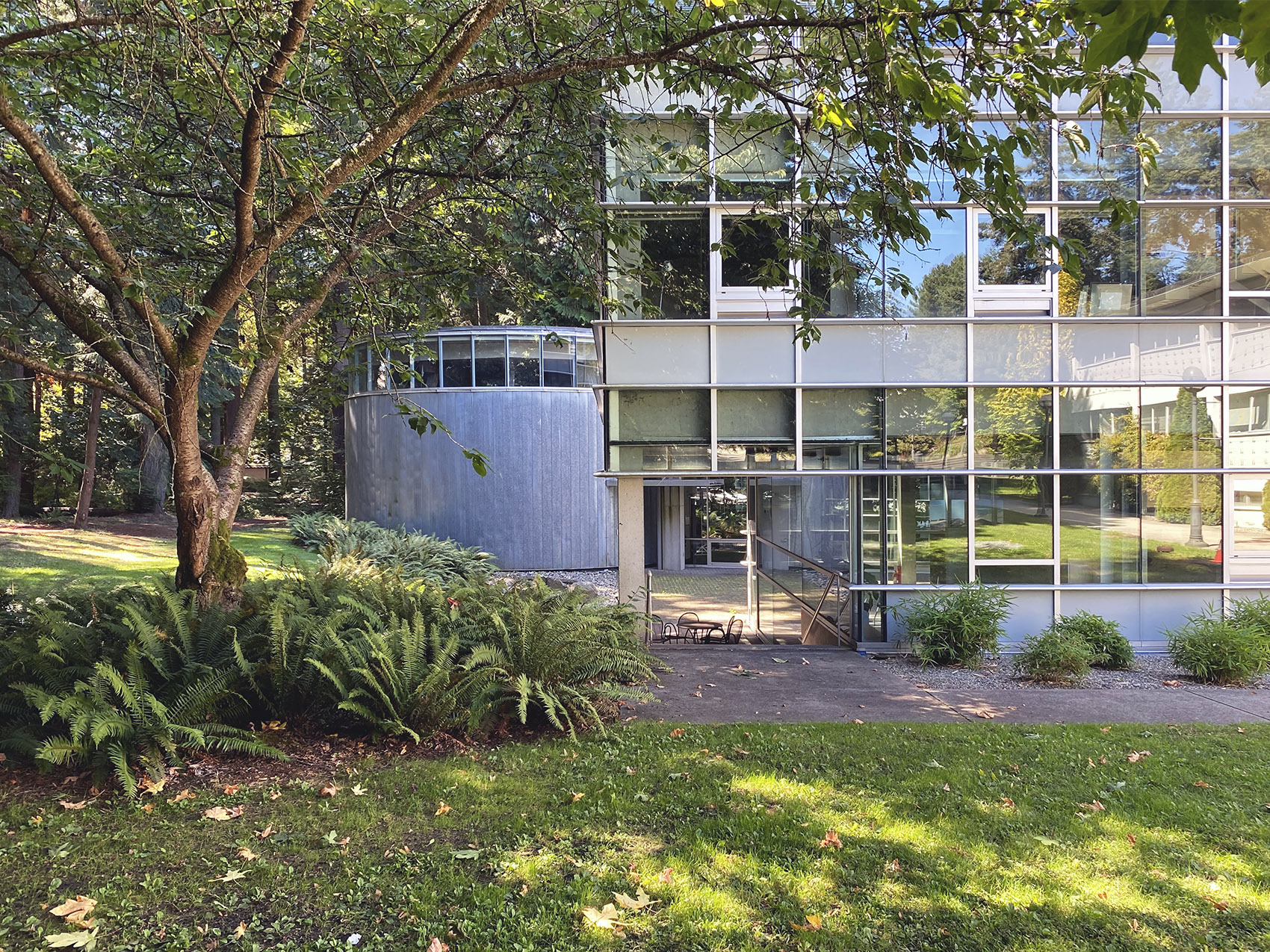
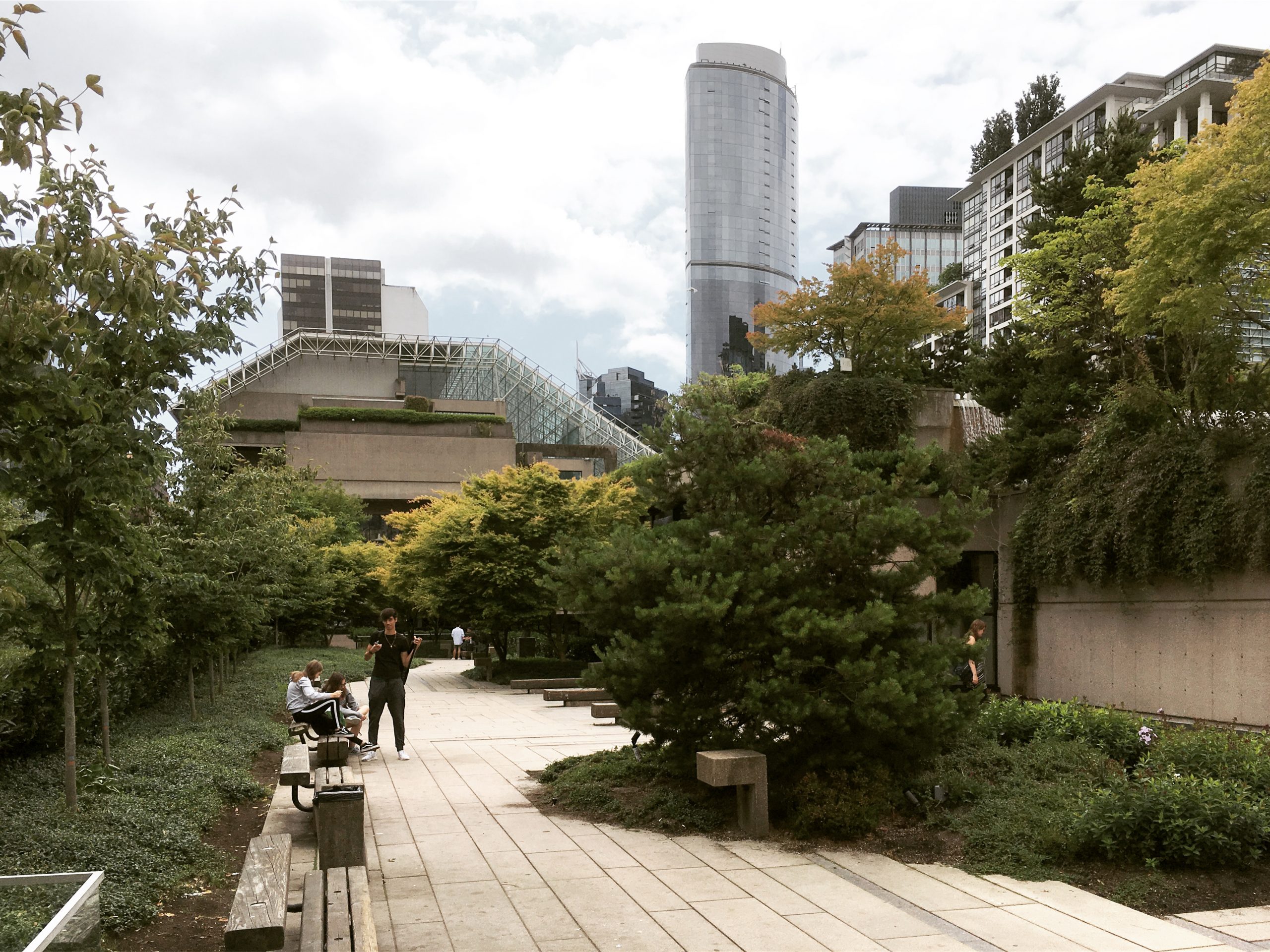
Bing Thom said it best, Erickson’s designs all had a common element, an inherent humanity.[3] Critical to understanding the character of his work, Arthur’s four first principles of architecture included site, light, cadence, and space. Taken from a 1975 monograph of his work, Arthur described these elements of architecture as follows: [4]
- Site: “To me, architecture means unifying the duality of site and building – which implies that the building cannot be removed from its setting and studied as a separate entity. It is the dialogue between building and setting that is the essence of architecture.”
- Light: “On my pilgrimages around the world, I realized that each culture had found a perfect solution for its climate – one that not only looked good but also contemplated the setting. It has become a kind of personal obligation to find an architectural form that suited the climate of Canada, particularly the grey skies of the Northwest Coast. Though the subtle and sensitive climate of the coast tends to make things drab and lifeless, it is also obvious that a too vital contrast of form or colour kills its fragile poetry.”
- Cadence: “Cadence, the rhythm of a building, is another pervasive aspect of architecture that has absorbed me. In its simplest form, as in music, rhythm involves repetition – which can be monotonous or exciting, stately or graceful, heavy or light. At a more sophisticated level, architecture offers many possibilities of overlaying various rhythms – rhythm in the overall structure, in details of the structure, in the size of spaces which the structure supports, and in the patterns and textures of the surface materials.”
- Space: “The strong landscape of the West Coast has ingrained its poetry into my sensibility and for better or worse conditioned my way of seeing. There was never a site, even the most unrewarding, which didn’t offer up some hidden pleasures to be enjoyed. Thus, the passage through the spaces of a house for me is an adventure in the discovery of its site. Whoever lives there lives in a direct and intimate relationship which his surroundings.”
- Arthur Erickson in interview with Abraham Roganick. July 28, 1986. Seattle Public Library.
- Stouck, D. (2013). Arthur Erickson: An Architect’s Life. Douglas & McIntrye.
- Architect Arthur Erickson dead at 84. May 20, 2009. CBC News.
- Erickson, A. (1975). The Architecture of Arthur Erickson. Tundra Books.
Arthur Erickson Day
The City of Vancouver has proclaimed June 14, 2024 as Arthur Erickson Day.
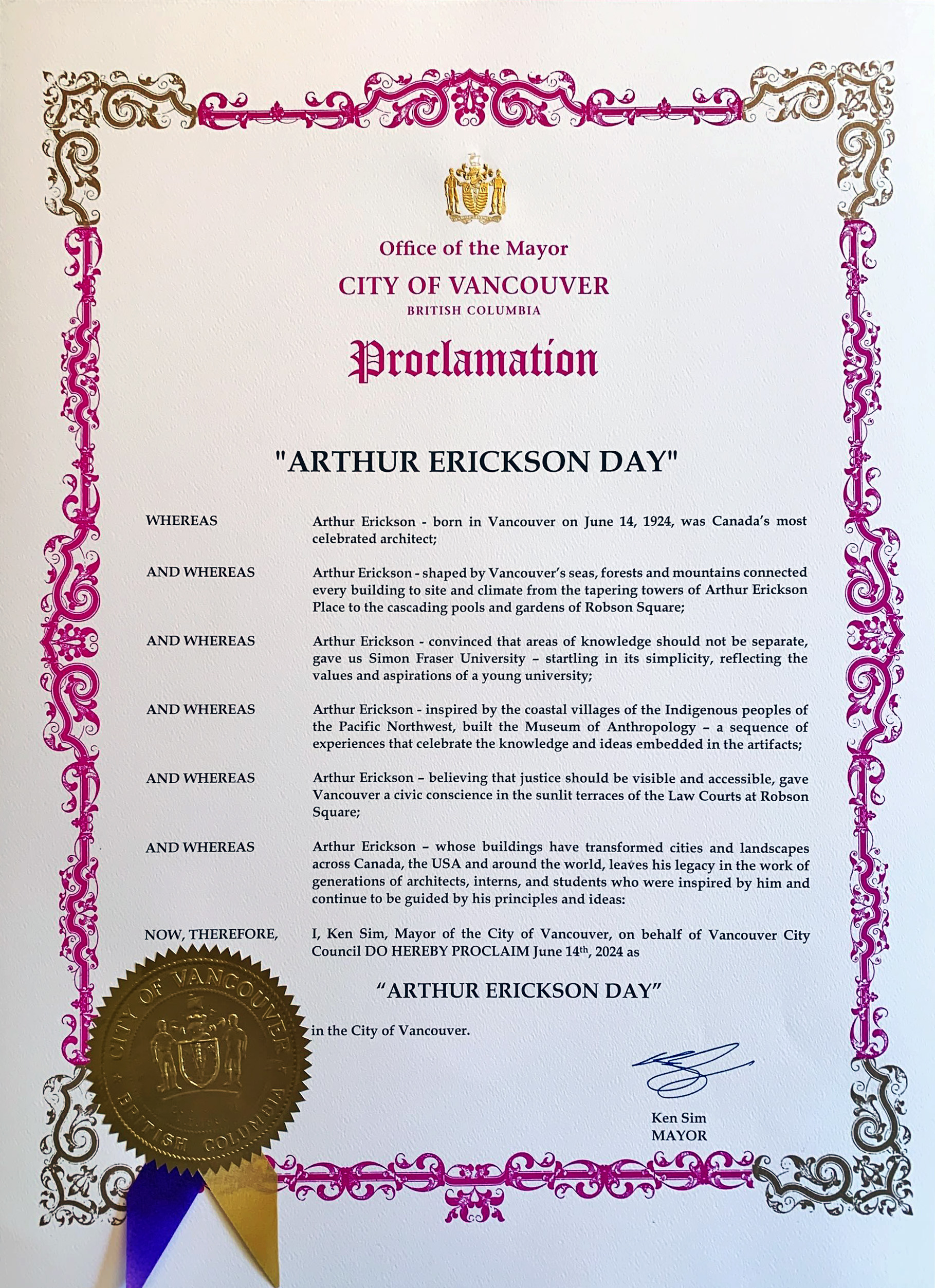
Arthur Erickson Centenary Celebrations
This year marks the centenary of Canada’s pre-eminent architect Arthur Erickson. Vancouver-born and raised, Erickson developed an interest first in the arts and then in the study of architecture, leading to an eclectic career with international impact that spanned six decades and produced some of Canada’s most iconic structures. Events are being held throughout the Vancouver area and across the country in celebration of the 100th anniversary of the architect’s birth.
- A Refuge: Arthur Erickson | Until July 20 | West Vancouver Art Museum
- Arthur Erickson Garden Tours | Bimonthly until October | Arthur Erickson Foundation
- Reimagined, Reopening | June 13–16 | Architectural Presentation June 14 @ 2:00 pm
- Erickson on Film | June 14–18 | VIFF Centre
- Arthur Erickson Centennial Celebration | July 7 | Robson Square Plaza Stage | Arthur Erickson Foundation
- Site | Light | Cadence | Space: Arthur Erickson Revisited | July 10 | Polygon Gallery | West Coast Modern League
- Helmut & Hugo Eppich House Tours | July 13 | West Coast Modern Home Tour | West Vancouver Art Museum
- Why Arthur Erickson Matters | Multiple Dates | Public Talks/Screenings with Trevor Boddy
- October 2 | Kennesaw State University Architecture
- October 18 | London Society of Architects, Museum London
- October 21 | Kitchener Public Library
- October 22 | Waterloo School of Architecture, Cambridge
- October 29 | School of Architecture, Toronto Metropolitan University
- November 12 | SAPL University of Calgary
- Arthur Erickson: Beauty Between the Lines | Nov 6-10 | Feature Documentary Premiering at ADFF:Vancouver
- Being There: Photography in Arthur Erickson’s Early Travel Diaries | Nov 14-March 16 | Canadian Centre for Architecture, Montréal
- Arthur Erickson Centenary Lecture Series | Fall 2024-2025 | Arthur Erickson Foundation
- The Visionary World of Arthur Erickson | Spring 2025 | Arthur Erickson Place, Vancouver
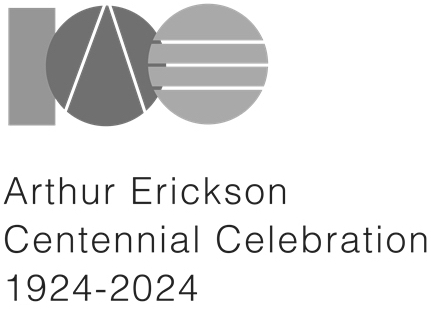
Awards & Recognition
- Massey Medal, Silver Medal for Killam/Massey House (1958)
- Centennial Design Award, National Housing Design Council (1967)
- Molson Prize, Canada Council for the Arts (1967)
- Massey Medal for Smith House II (1967)
- Massey Medal for Simon Fraser University (1967)
- Massey Medal for the Canadian Pavilion for the International Trade Fair (1967)
- Award of Merit, Canadian Architect (1968)
- Architectural Record Award for Lam House (1969)
- Massey Medal for MacMillan Bloedel Building (1970)
- Massey Medal for the Canadian Pavilion at Expo ’70 (1970)
- Triangle Award of the National Society of Interior Designers for the Canadian Pavilion at Expo 70 (1970)
- Award for Best Pavilion at Expo ’70, Architectural Institute of Japan (1970)
- Award of Excellence, Canadian Architect (1970)
- Award, Centre du Plateau Beaubourg (Pompidou Centre), Paris, Cultural Centre Competition (1971)
- Royal Bank of Canada Award, for outstanding contributions to human welfare and common good (1971)
- Officer of the Order of Canada (1973)
- Gold Medal in Architecture and the Allied Arts, Tau Sigma Delta Honor Society (1973)
- Auguste Perret Award, International Union of Architects (1974)
- Auguste Perret Award for general excellence in design at the International Union of Architects Congress (1975)
- President’s Award of Excellence for Robson Square, American Society of Landscape Architects (1979)
- RAIC Festival of Architecture Honour Award (6), for Robson Square and the Provincial Law Courts, Eppich Residence, the Museum of Anthropology, Habitat Pavilion, Sikh Temple and Champlain Heights Community School (1980)
- Companion of the Order of Canada (1981)
- Governor General’s Award for Architecture (formerly Massey Medal) for Robson Square Complex (1982)
- Governor General’s Award for Architecture for Yorkdale Transit System (1982)
- Governor General’s Award for Architecture for the Museum of Anthropology (1983)
- Gold Medal for Outstanding Architect, Royal Architectural Institute of Canada (1984)
- First Chicago Architecture Award (with Philip Johnson) (1984)
- Gold Medal, French Academy of Architecture (1984)
- Gold Medal, American Institute of Architects (AIA) (1986)
- Honorary Fellow of the Collegio d’Architectura d’Espana (1987)
- Honorary Fellow of the Royal Incorporation of Architects in Scotland (1988)
- Honorary Fellow of the Collegio d’Architectura de Mexico (1993)
- Honorary Fellow of the Royal Institute of British Architects (2001)
- Medal for the design of the Waterfall Building, Architectural Institute of British Columbia, (with Nick Milkovich Architects Inc.) (2002)
- Medal for the design of the Museum of Glass, Architectural Institute of British Columbia, (with Nick Milkovich Architects Inc.) (2003)
- Design Arts Award, Vancouver Arts Awards (2004)
- Premier’s Award of Excellence in Architecture for RCMP Heritage Centre (2007)
- RAIC Prix du XXe siecle award for Simon Fraser University (2007)
- RAIC Prix du XXe siecle award for Smith House (2007)
- Urban Development Institute Award for “The Erickson” (with Nick Milkovich Architects Inc.) (2010)
- RAIC Prix du XXe siecle award for Museum of Anthropology (2011)
- RAIC Prix du XXe siecle award for Robson Square (2011)
Honorary Degrees
- LL.D. (Honoris Causa), Simon Fraser University (1973)
- D.Eng. (Honoris Causa), Technical University of Nova Scotia (1973)
- LL.D. (Honoris Causa), McGill University (1975)
- LL.D. (Honoris Causa), University of Manitoba (1978)
- LL.D. (Honoris Causa), University of Lethbridge (1981)
- D.Lit. (Honoris Causa), University of British Columbia (1985)
- D.Lit. (Honoris Causa), Lakehead University (1988)
- M.Arch., The School of Architecture at Taliesin (2001)
In the News
- Design community celebrates late architect’s 100th birthday. Courtney Dickson. June 14, 2024. CBC News.
- Arthur Erickson Foundation launches celebrations of AE100 centennial. June 14, 2024. Canadian Architect.
- Inside the glass house on Burnaby’s Deer Lake. On the Coast with Gloria Macarenko. June 13, 2024. CBC Radio 1 Vancouver.
- Centenary of Vancouver architect Arthur Erickson to be marked with look at life, work, and influence. John Ackermann. June 13, 2024. City News Vancouver.
- The Museum of Anthropology at the University of British Columbia reopens after seismic upgrades. Marsha Lederman. June 12, 2024. The Globe and Mail.
- June 14 to be recognized as Arthur Erickson Day in celebration of the late, great architect. Vicki Duong. June 12, 2024. The Georgia Straight.
- UBC’s Museum of Anthropology reopening after 18 months. Chuck Chiang. June 12, 2024. CBC News.
- To Save the Iconic Museum of Anthropology He Had to Destroy It. Adele Weder. June 10, 2024. The Tyee.
- Celebrating Architect Arthur Erickson. June 10, 2024. On The Coast with Gloria Macarenko. CBC Radio 1 Vancouver.
- New VIFF Series Celebrates a Vancouver Architecture Legend on the Big Screen. Thalia Stopa. June 3, 2024. Scout Magazine.
- VIFF Centre celebrates the 100th anniversary of architect Arthur Erickson’s birth with special programming. Vicki Duong. May 29, 2024. The Georgia Straight.
- Exhibition offers a glimpse of architect Arthur Erickson’s home. Kerry Gold. May 24, 2024. The Globe and Mail.
- A Refuge: Arthur Erickson is an immersive look at the revered late architect’s personal comforts. Gail Johnson. May 14, 2024. Stir Magazine.
